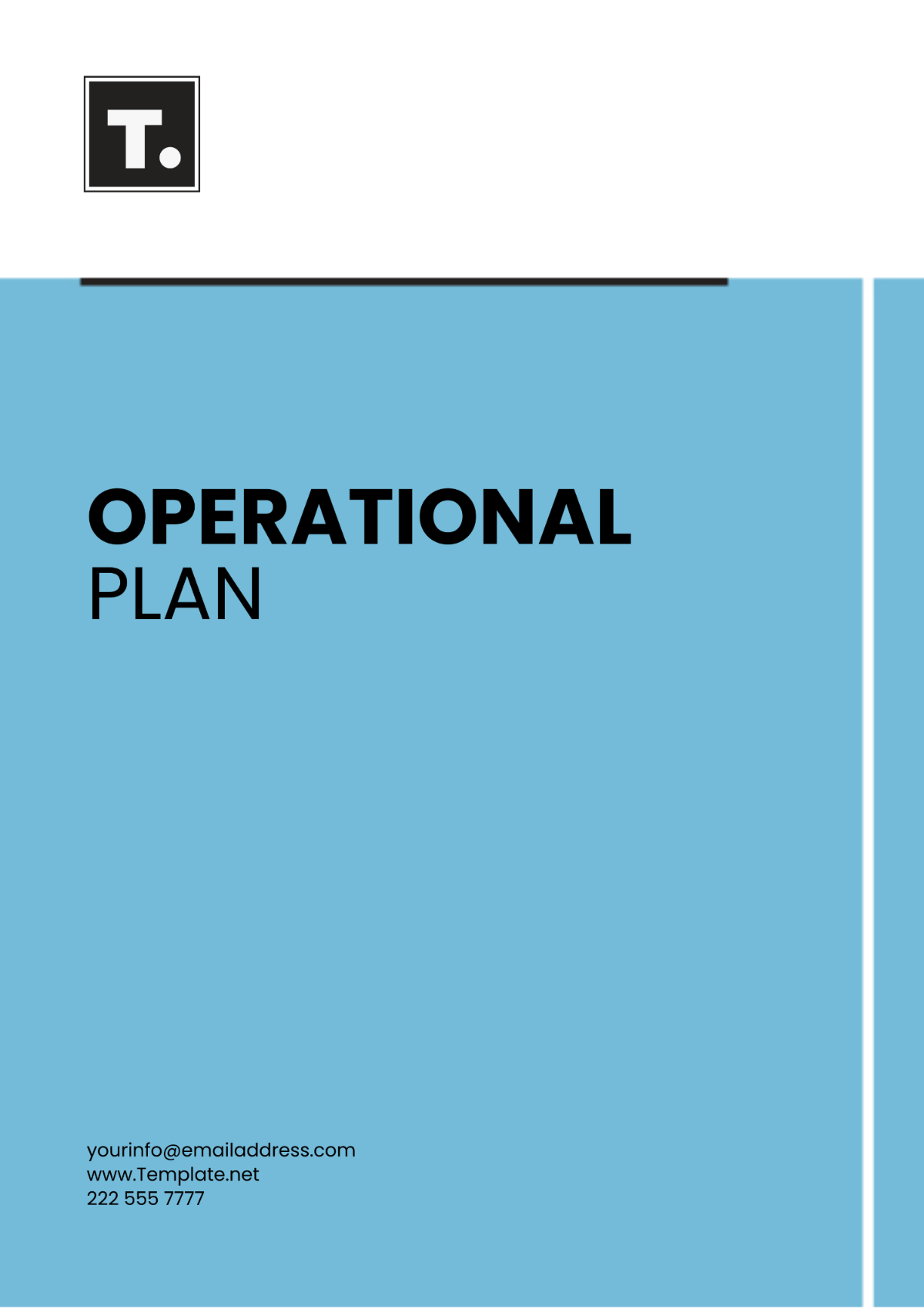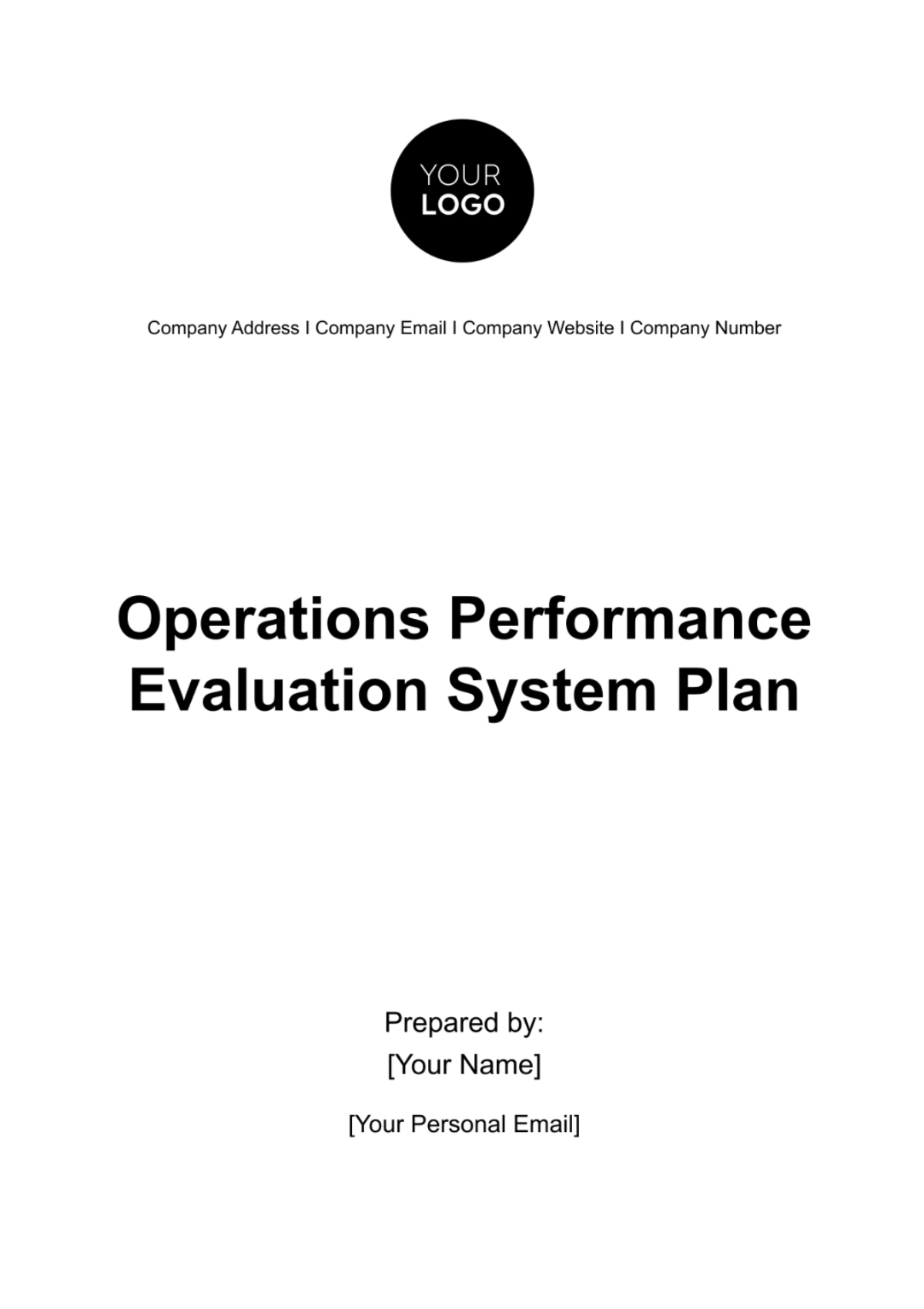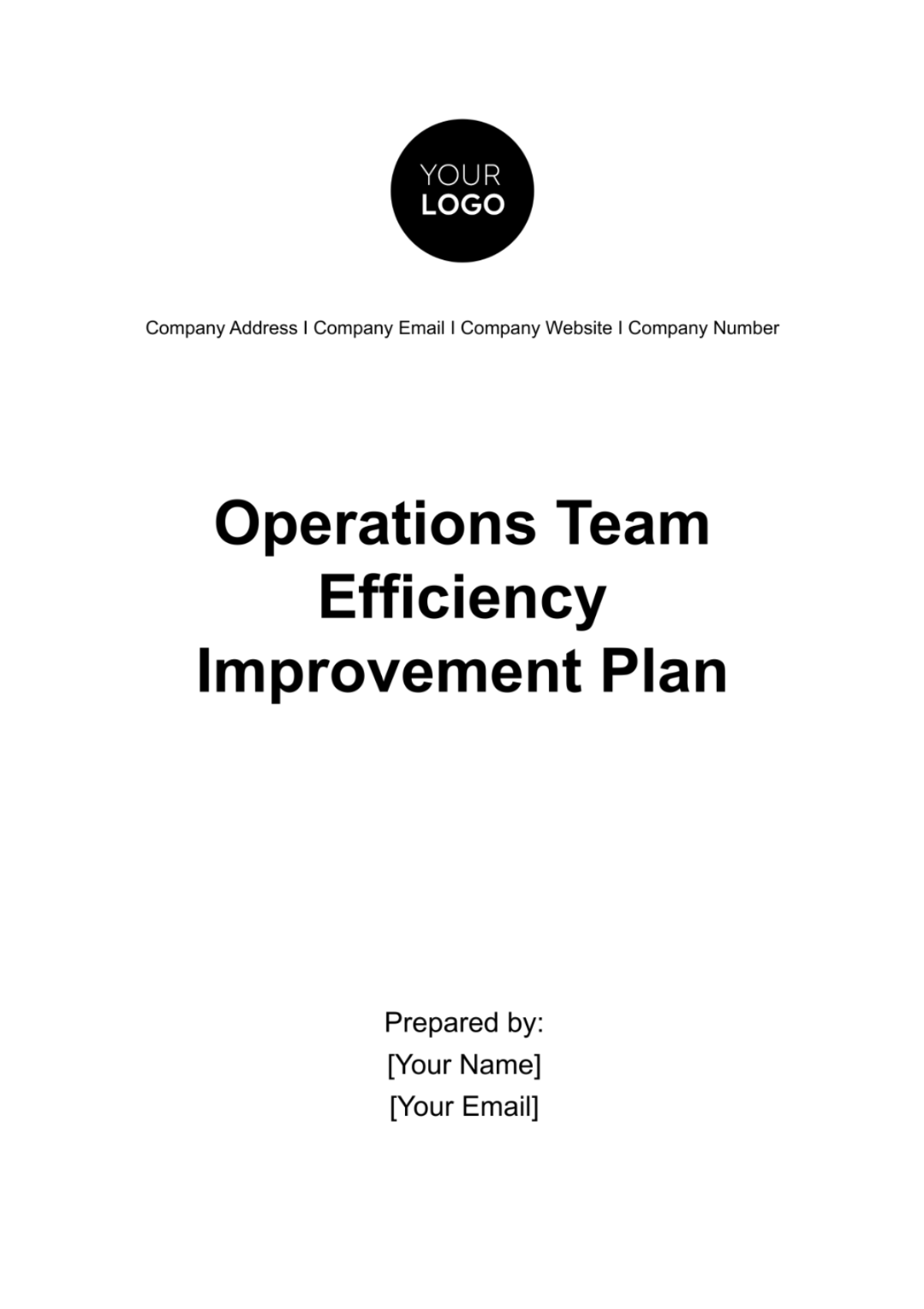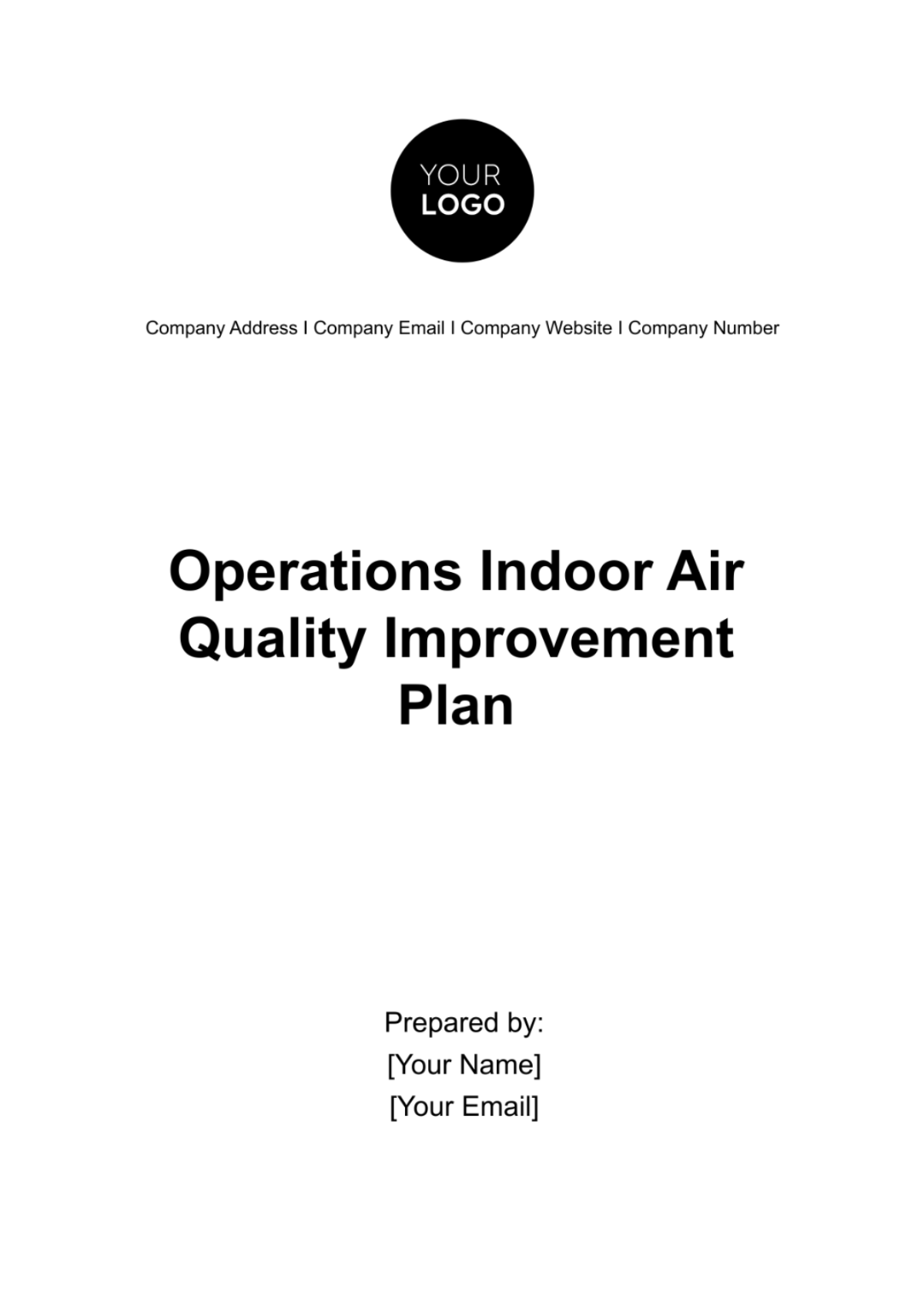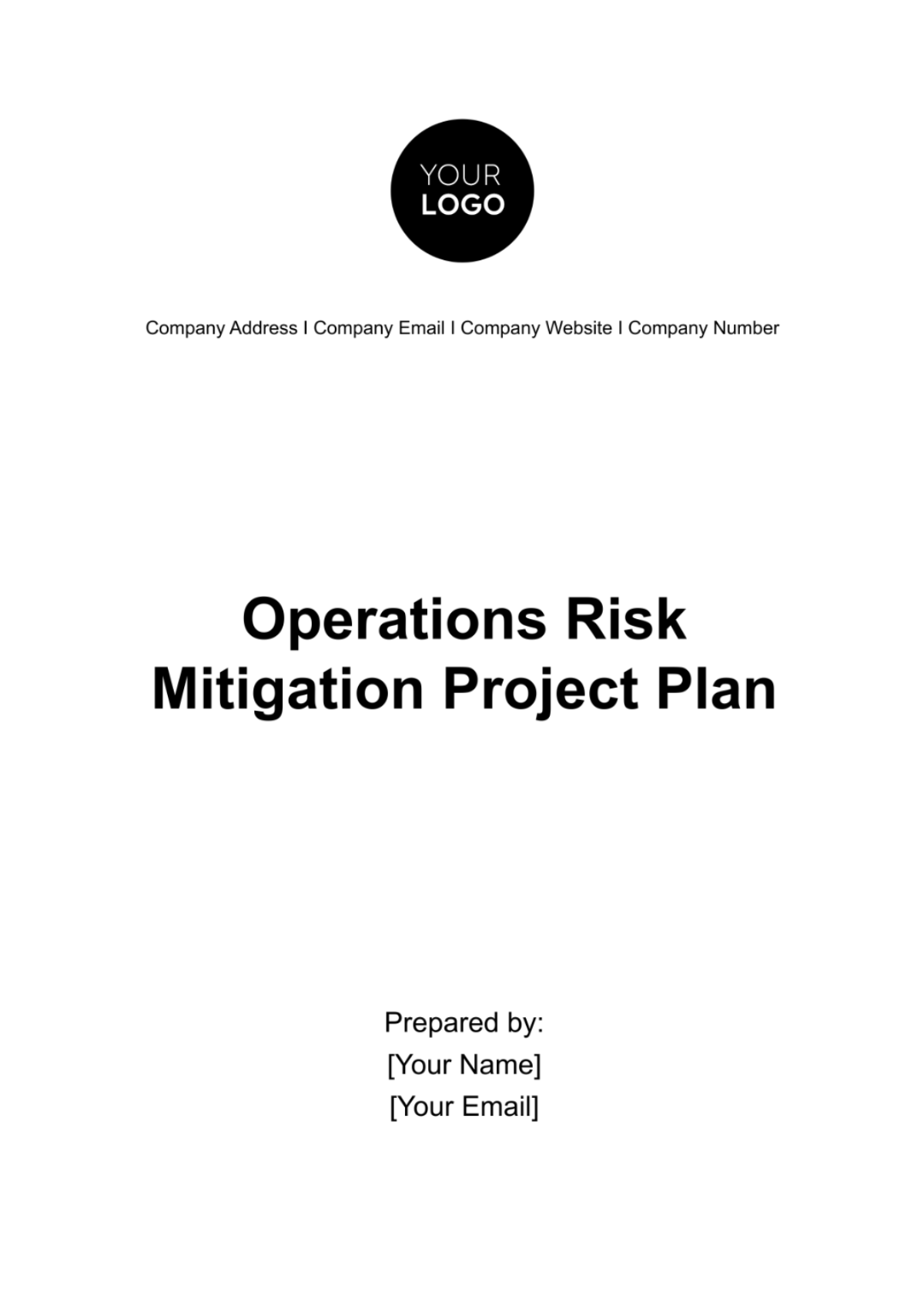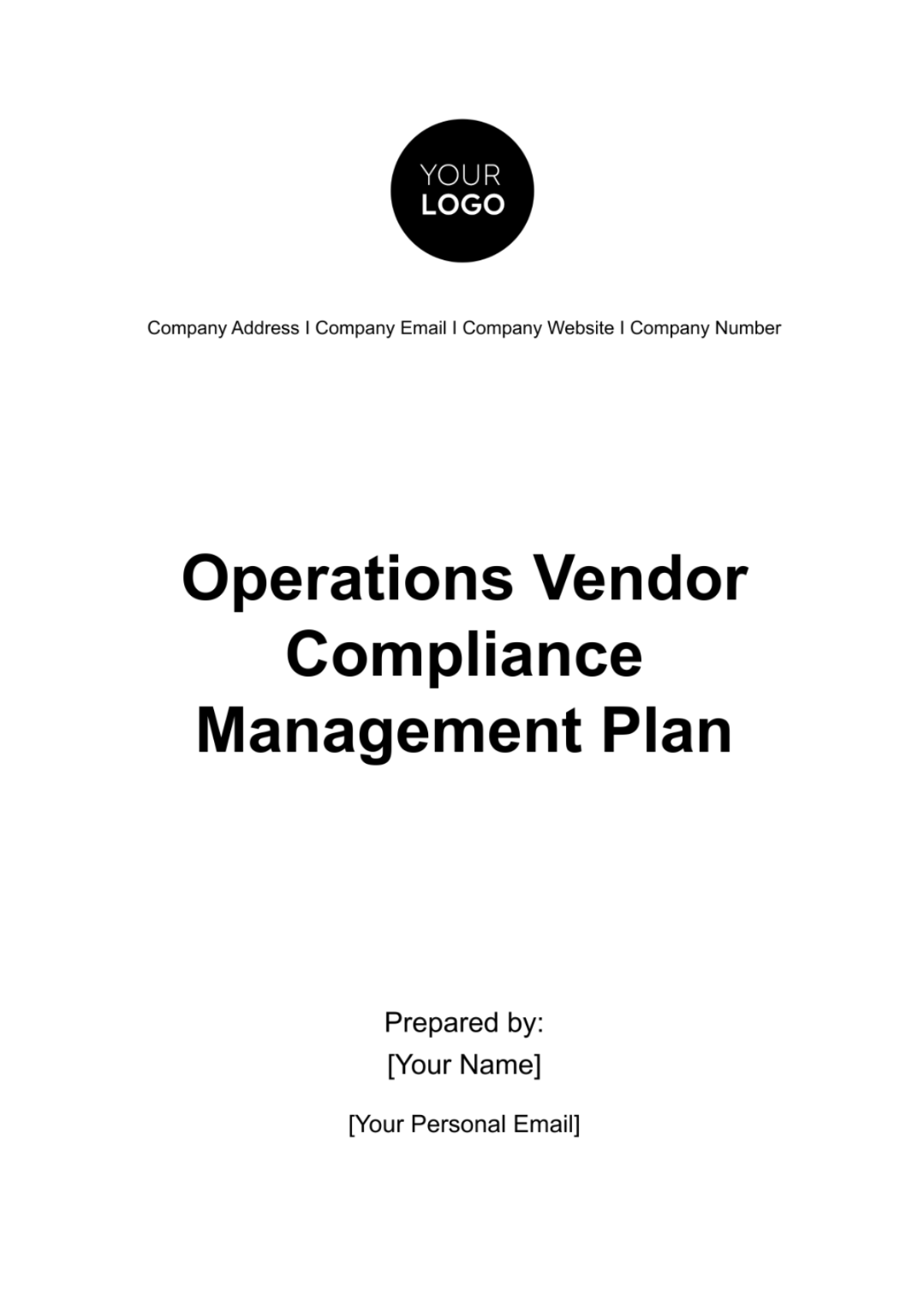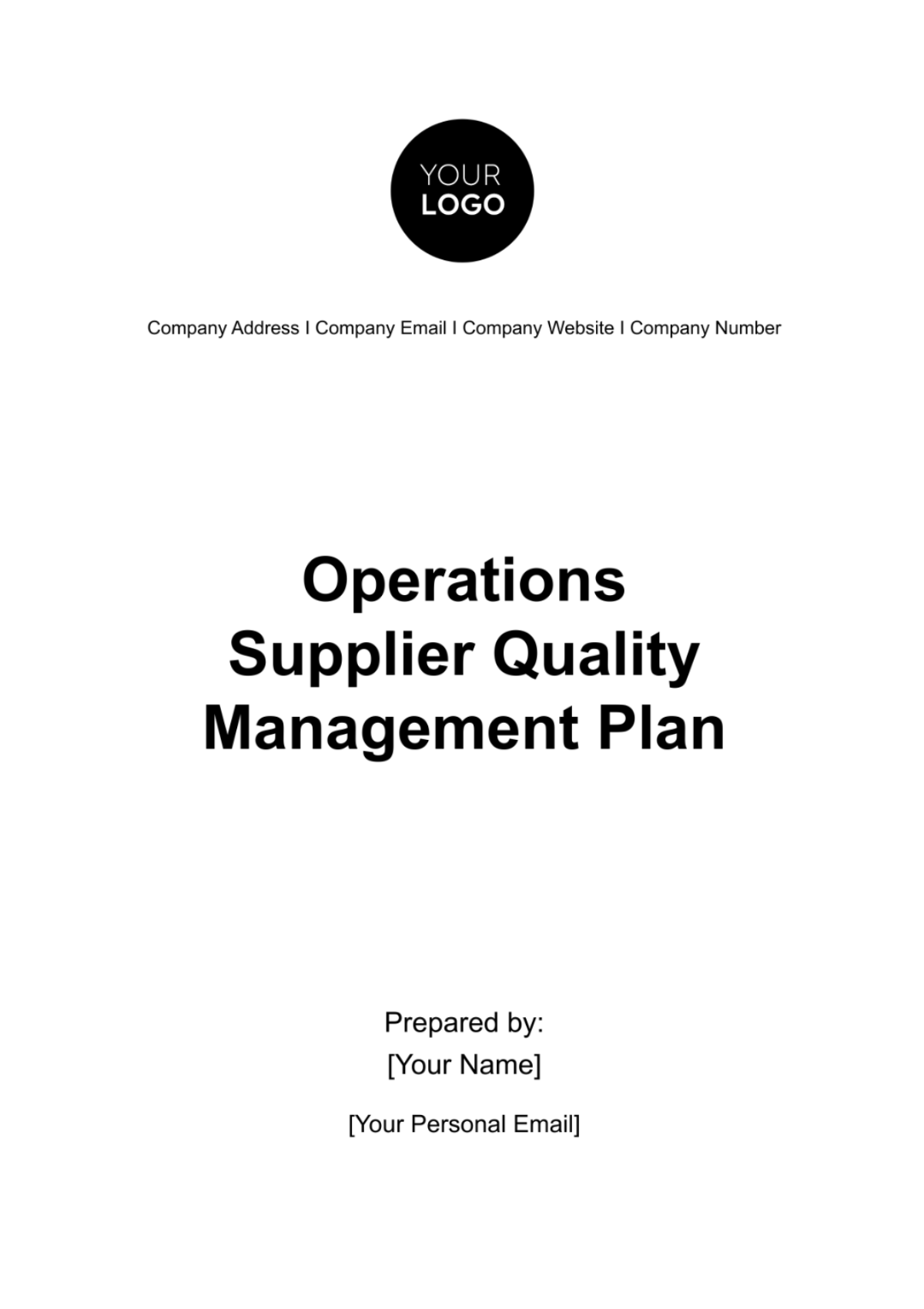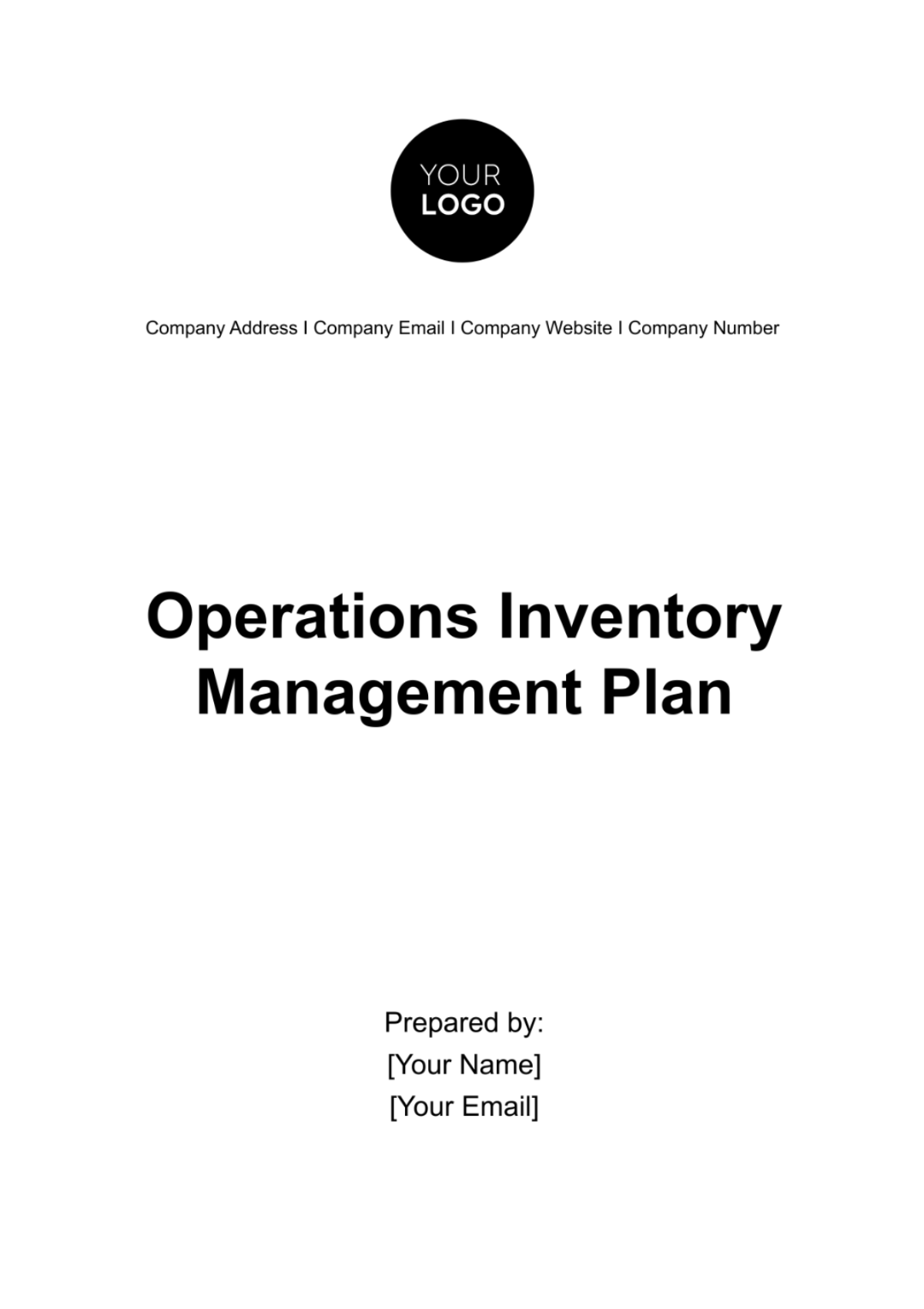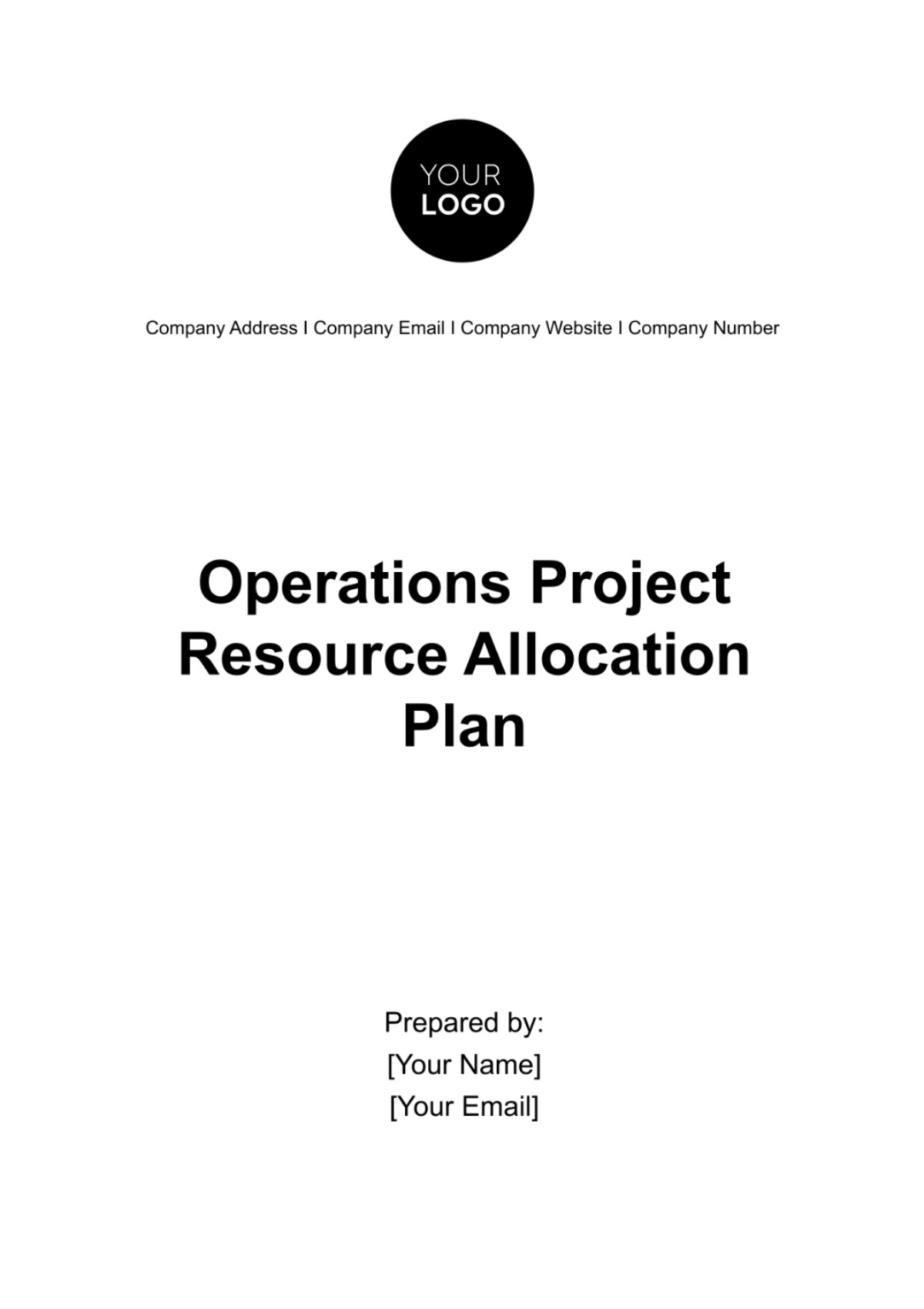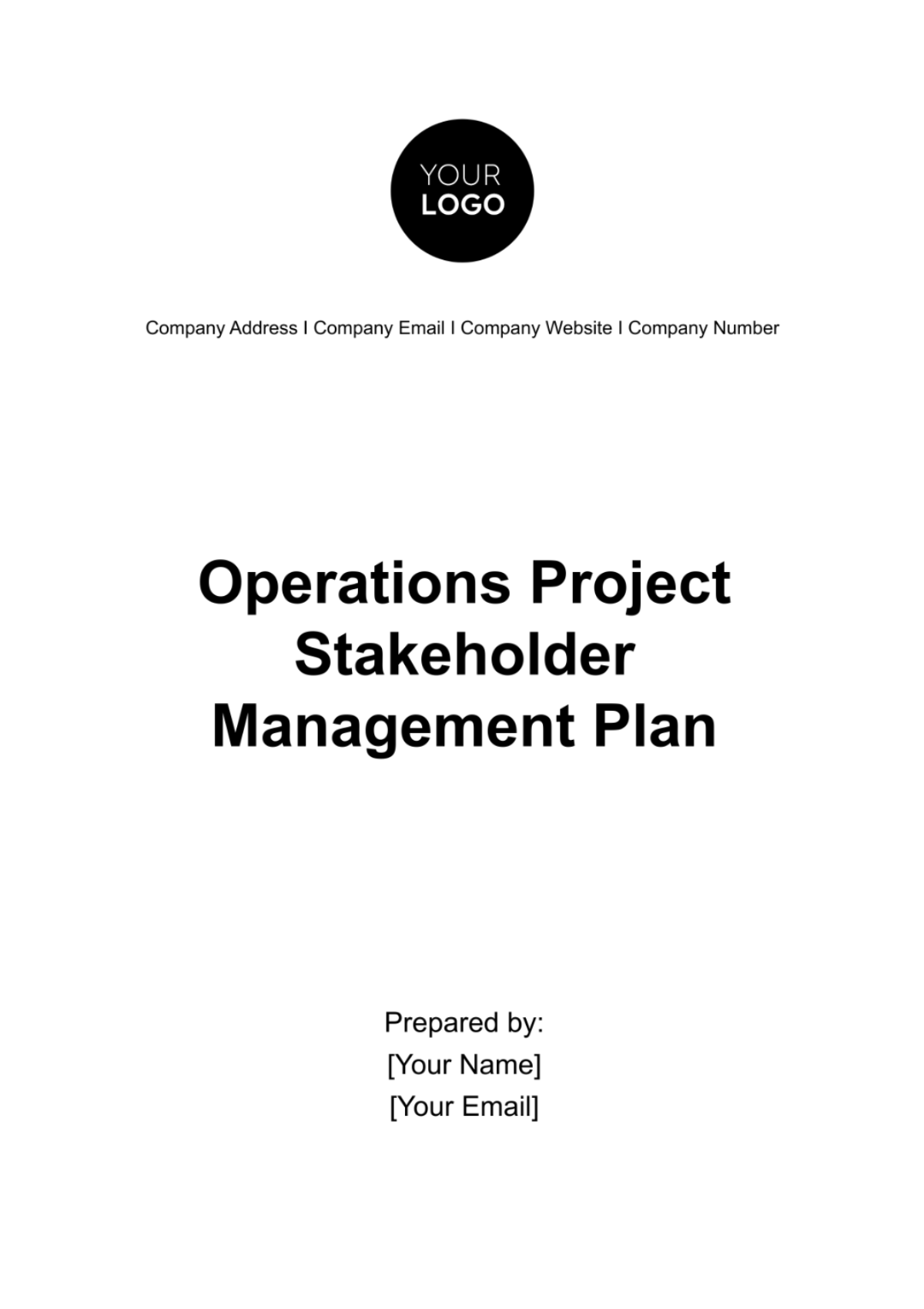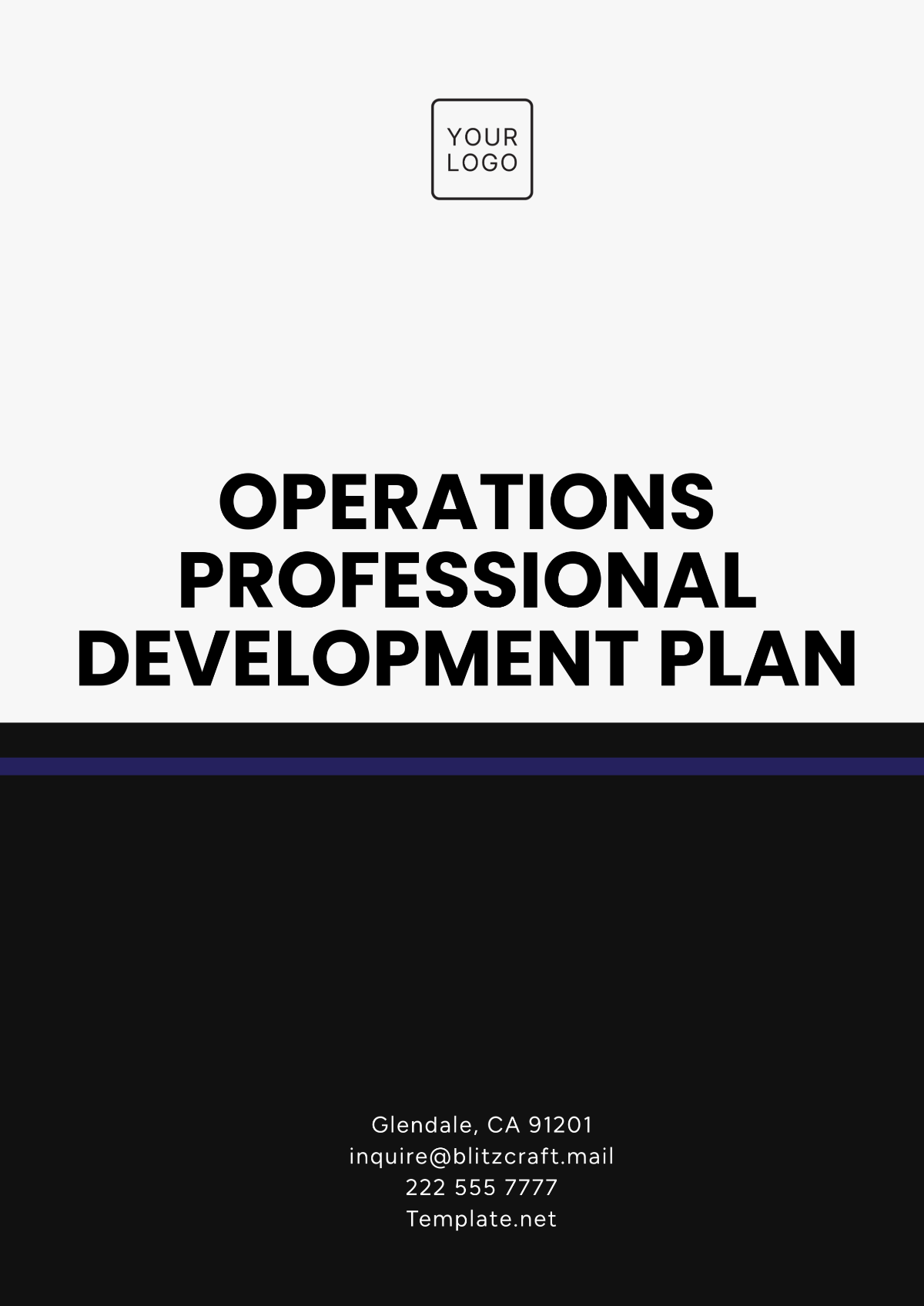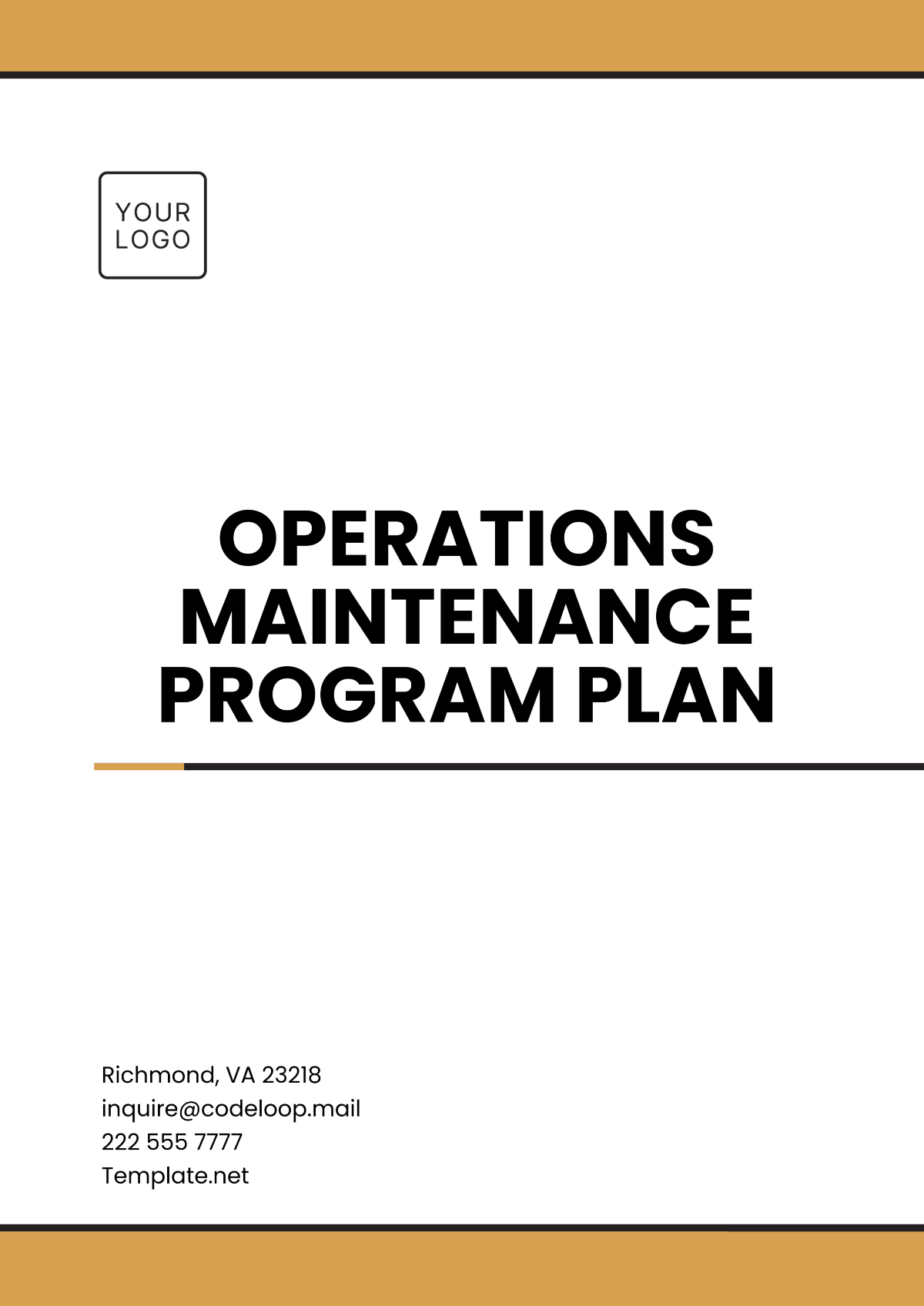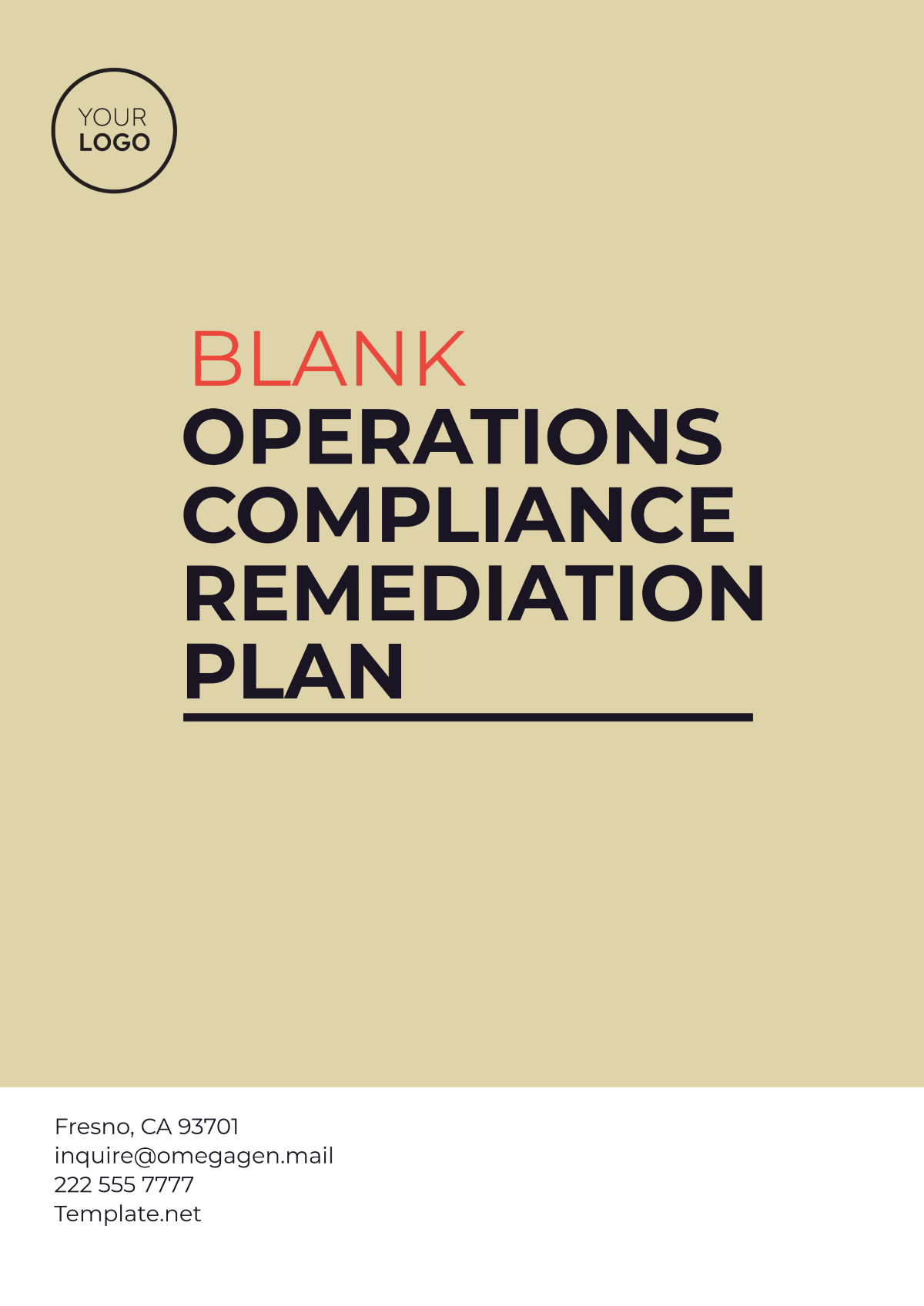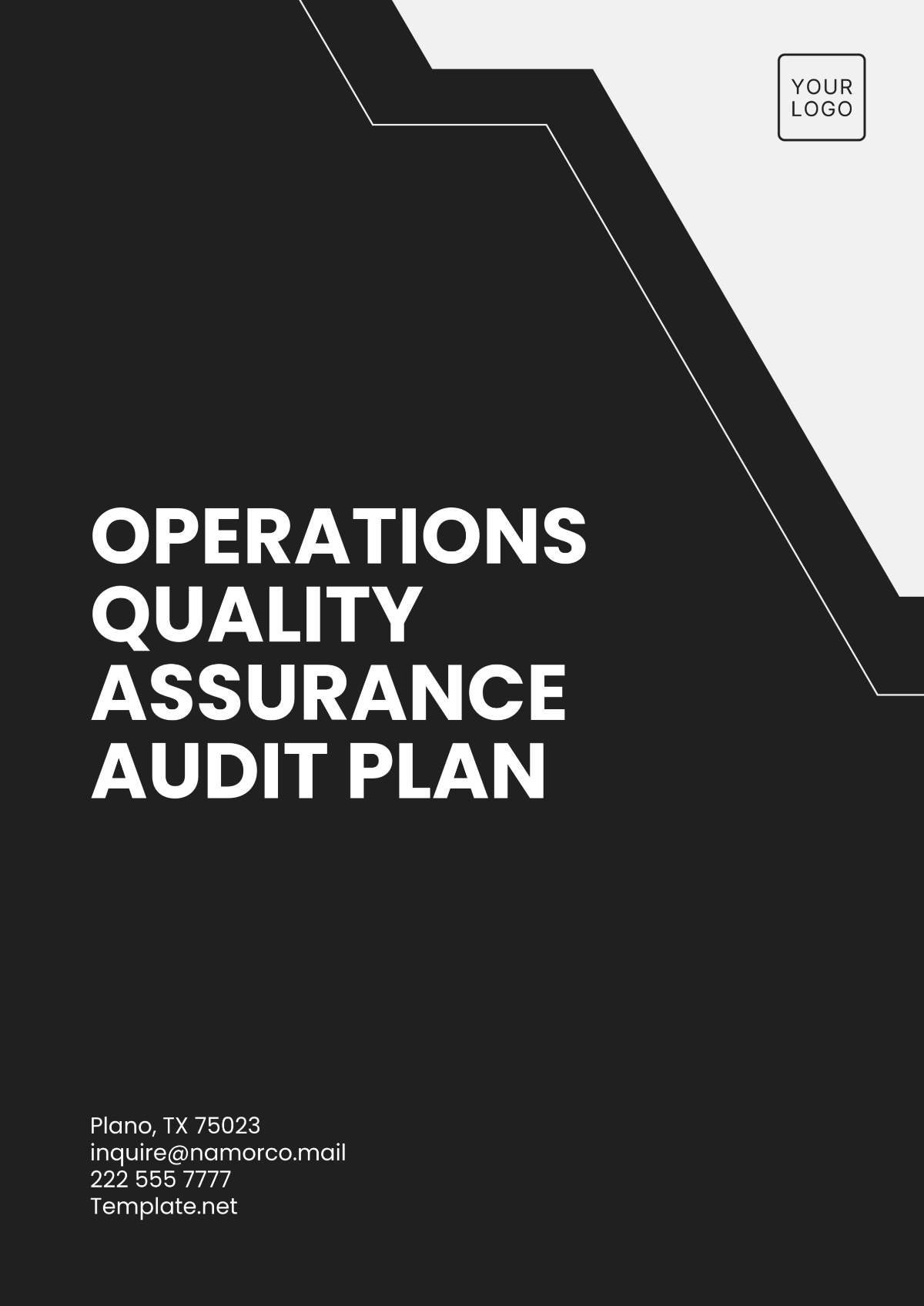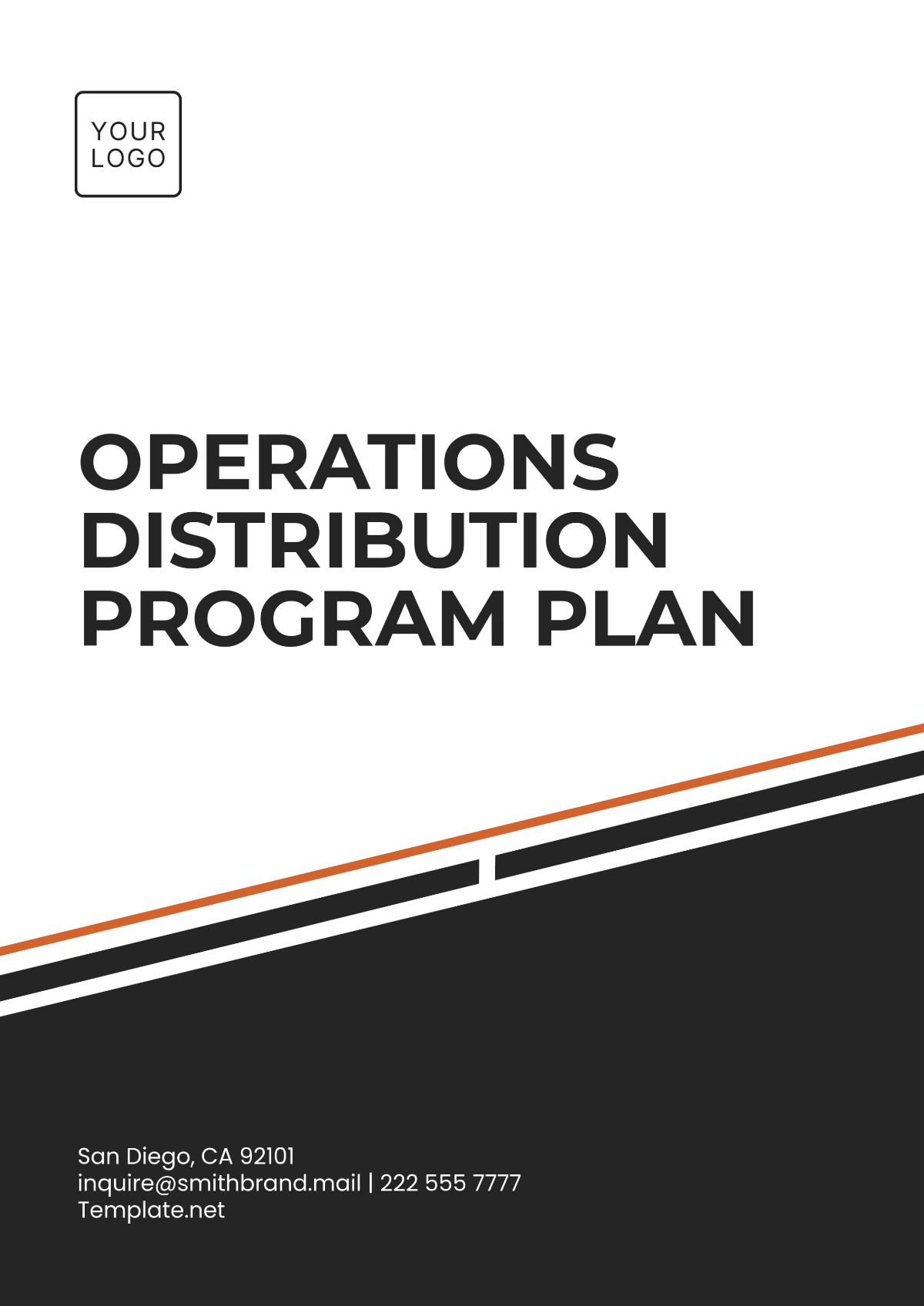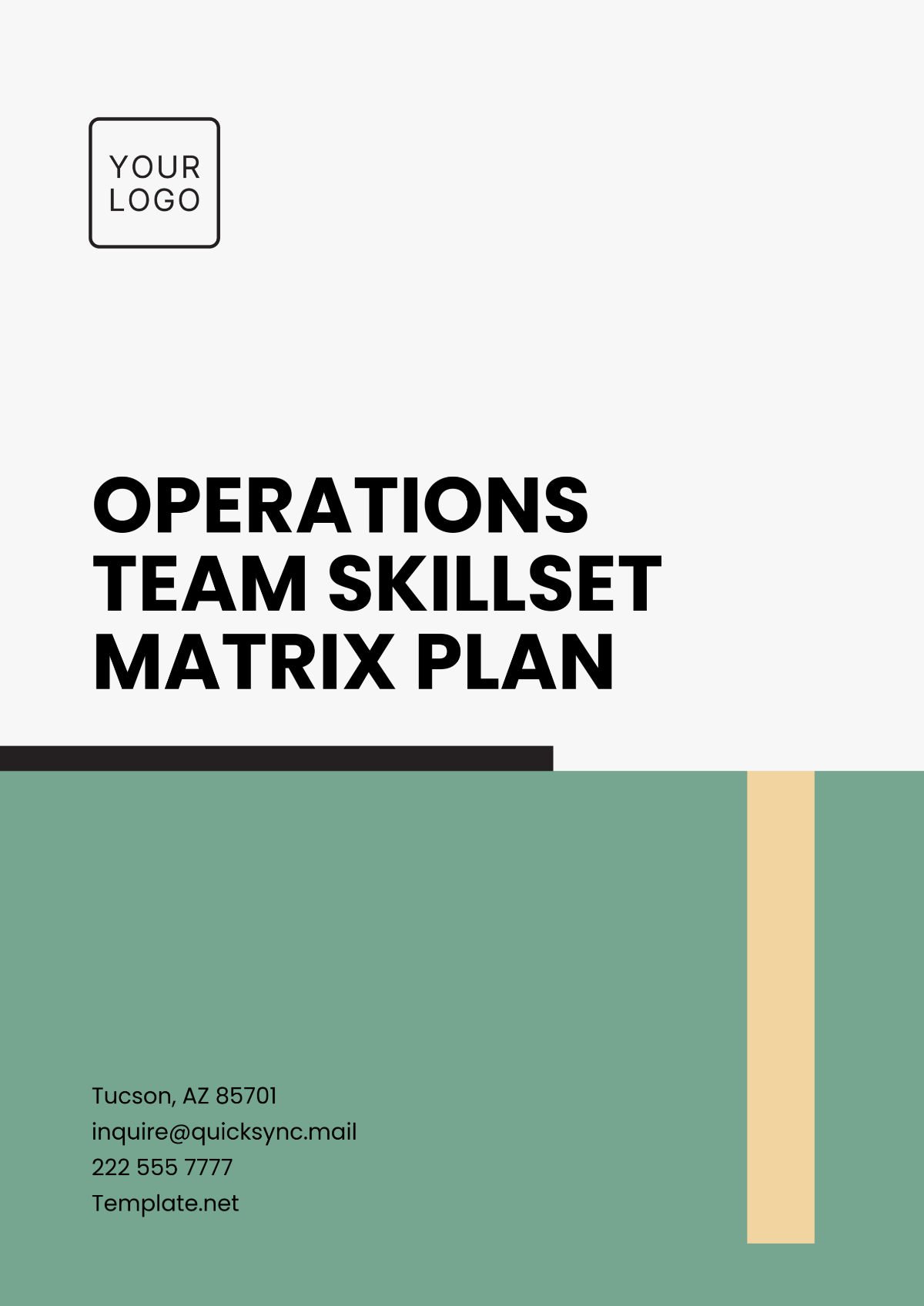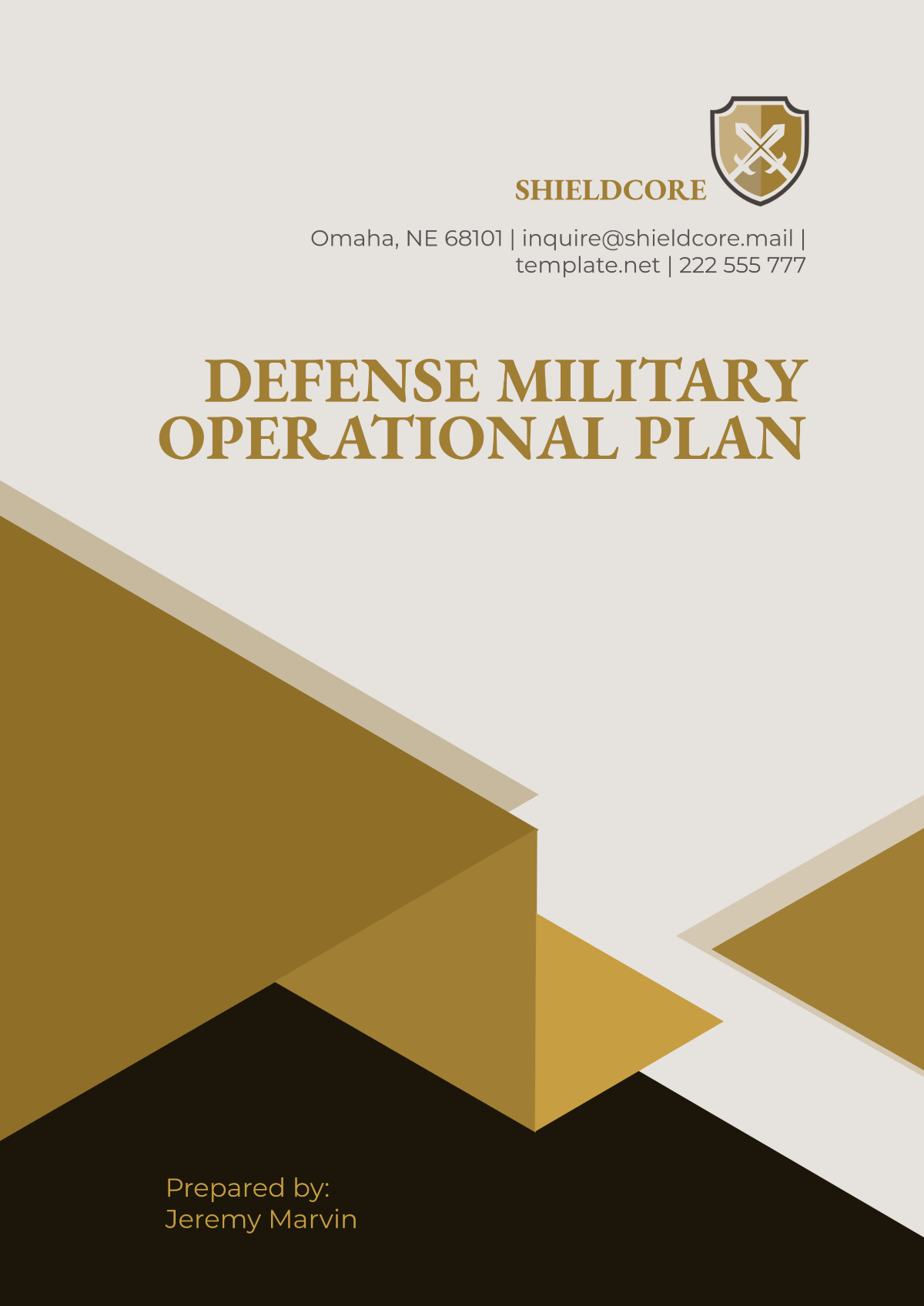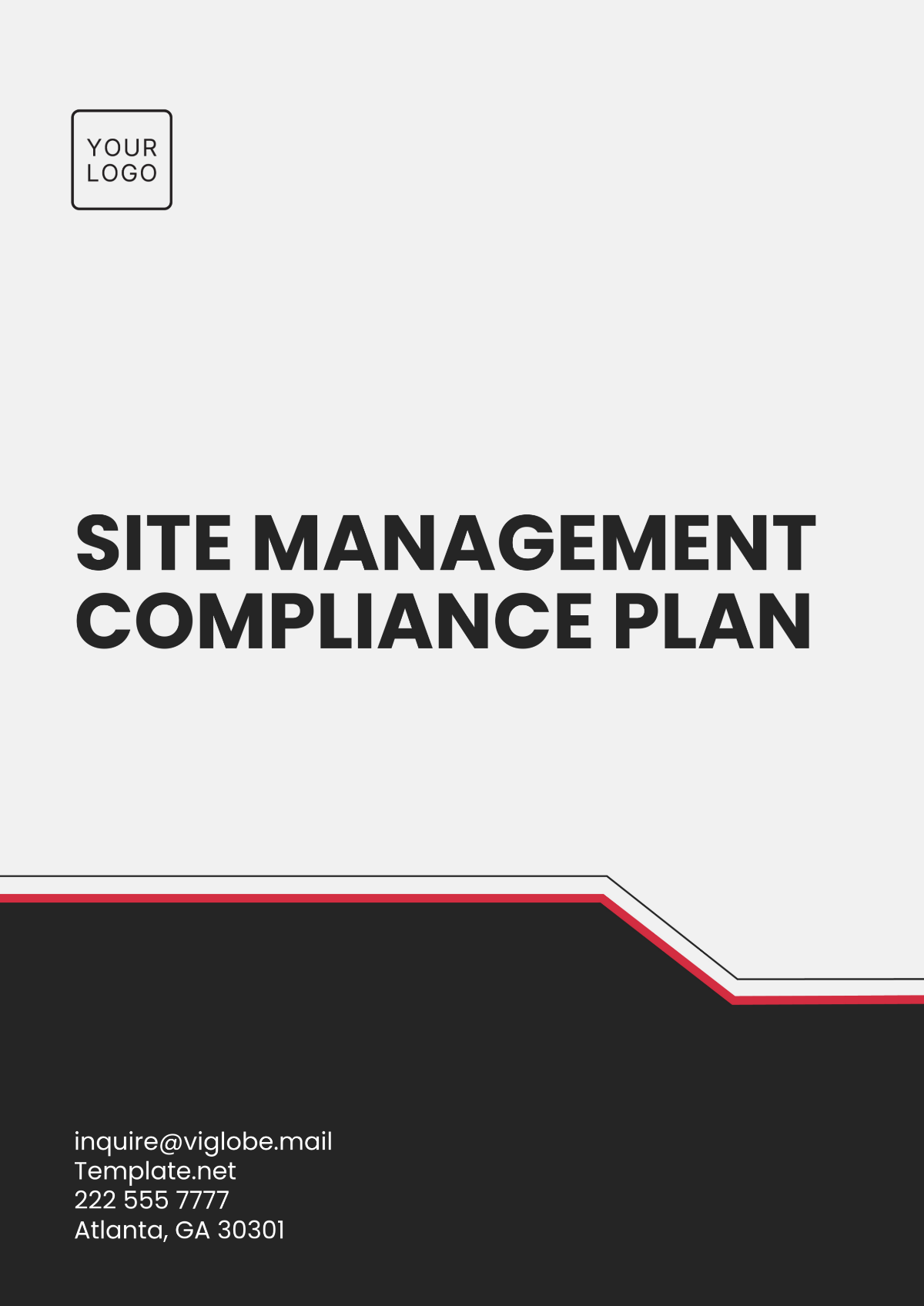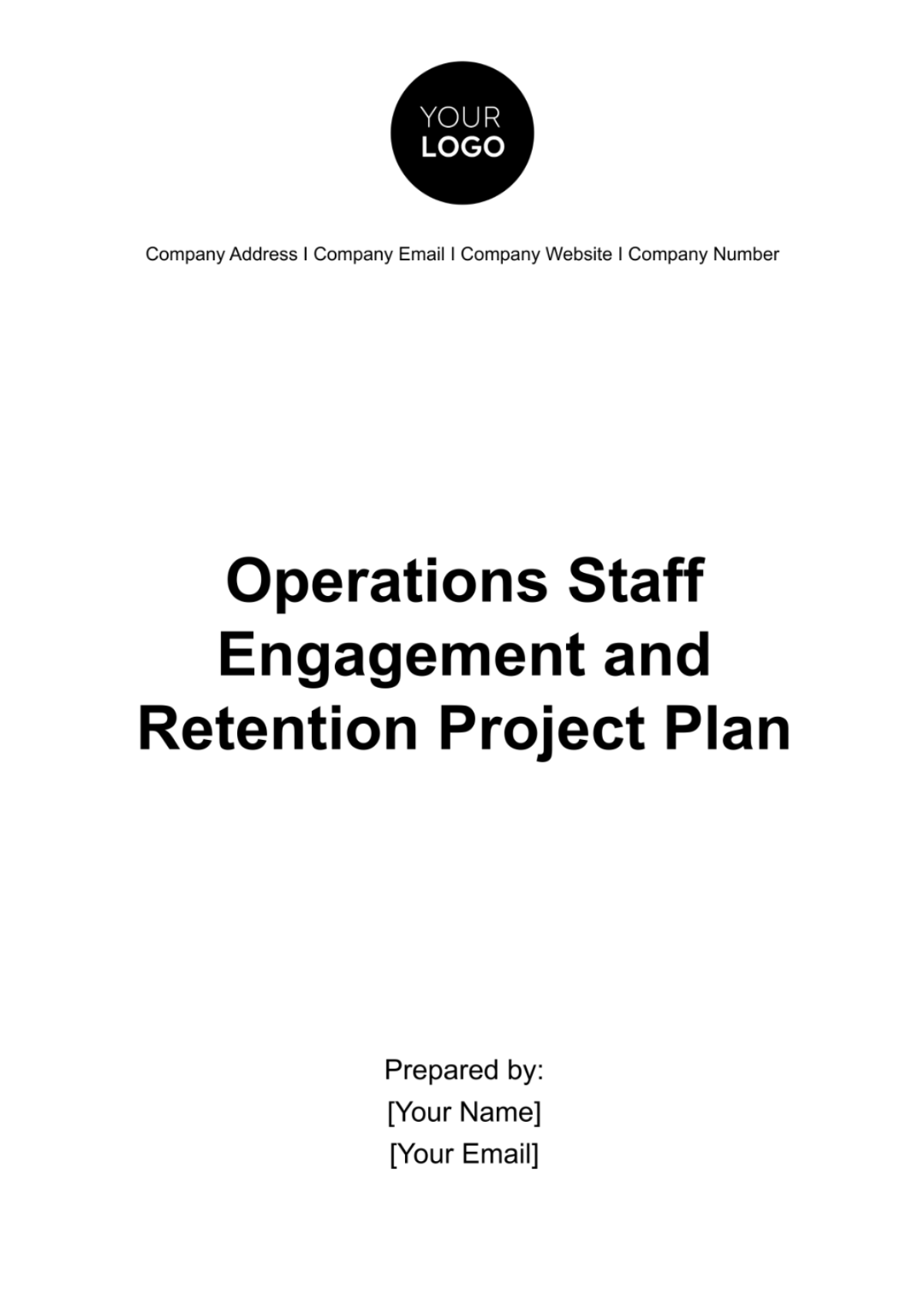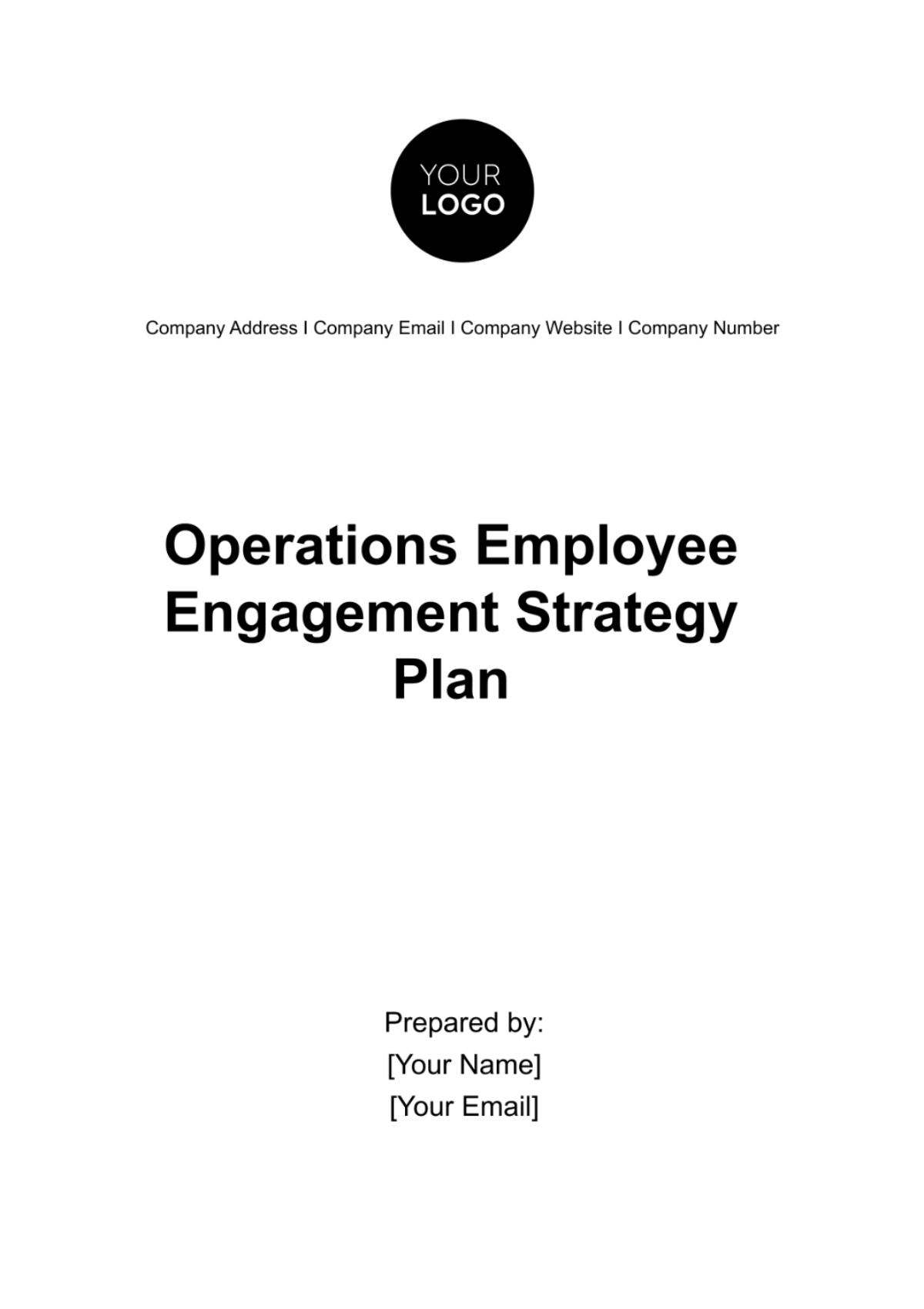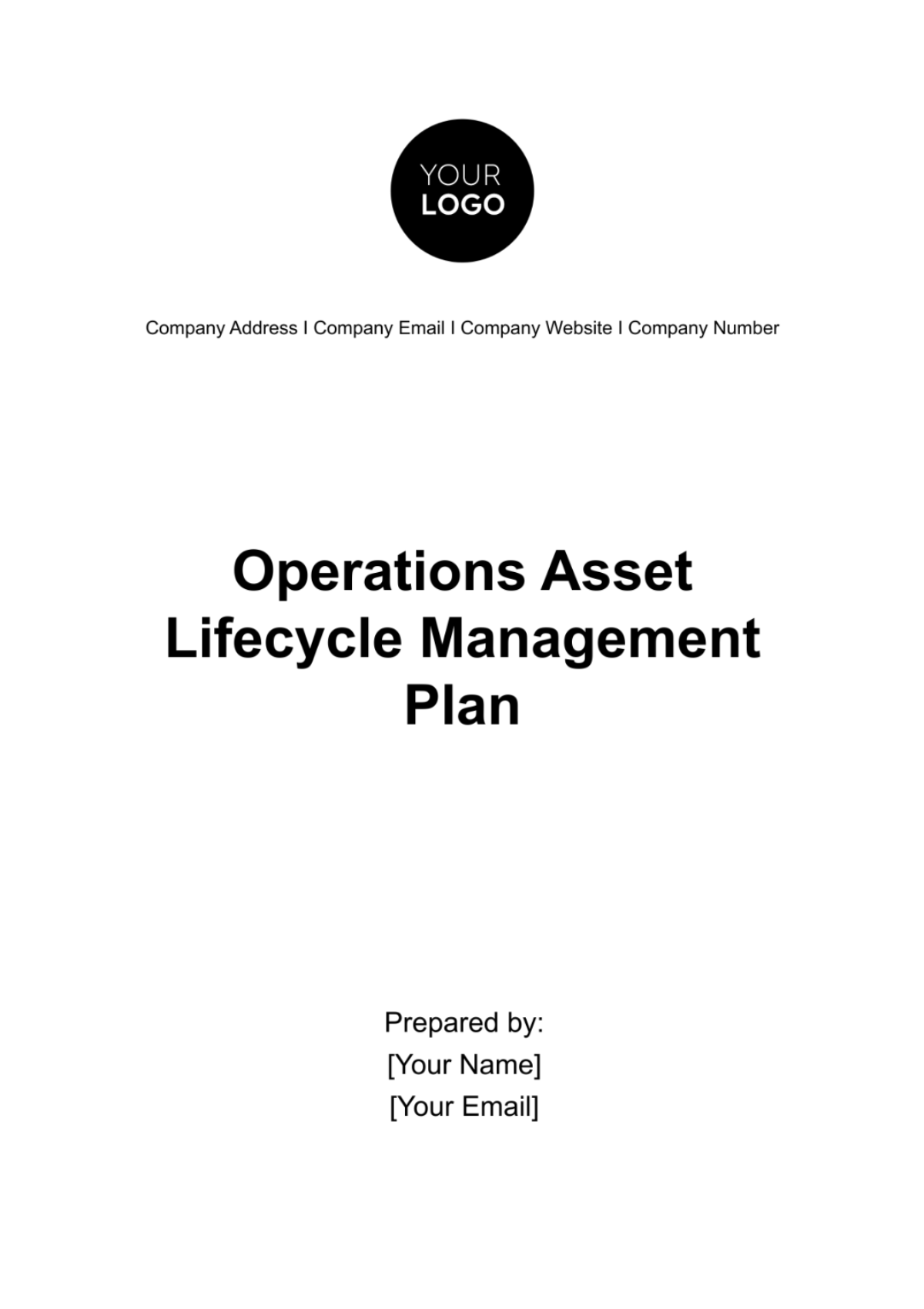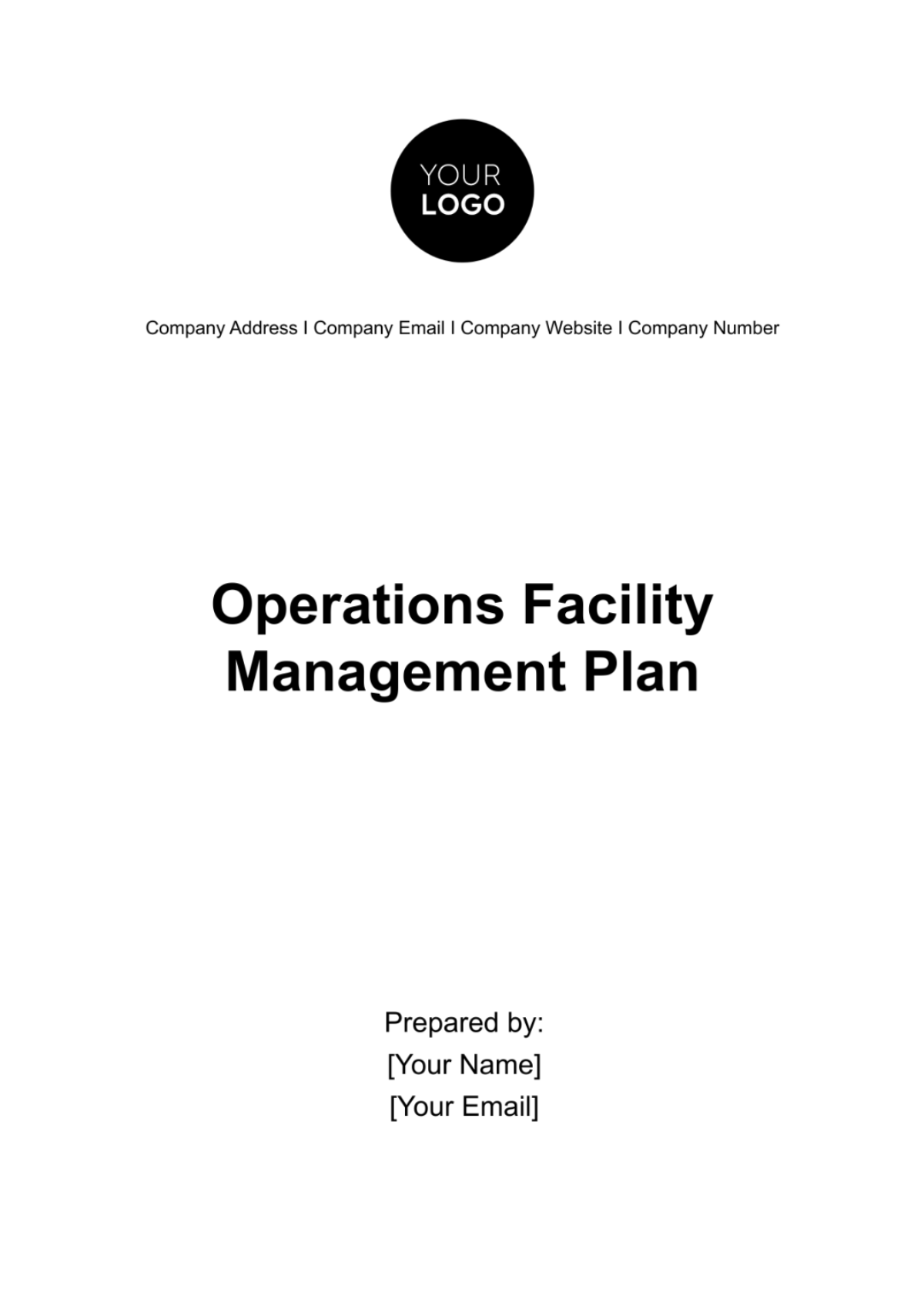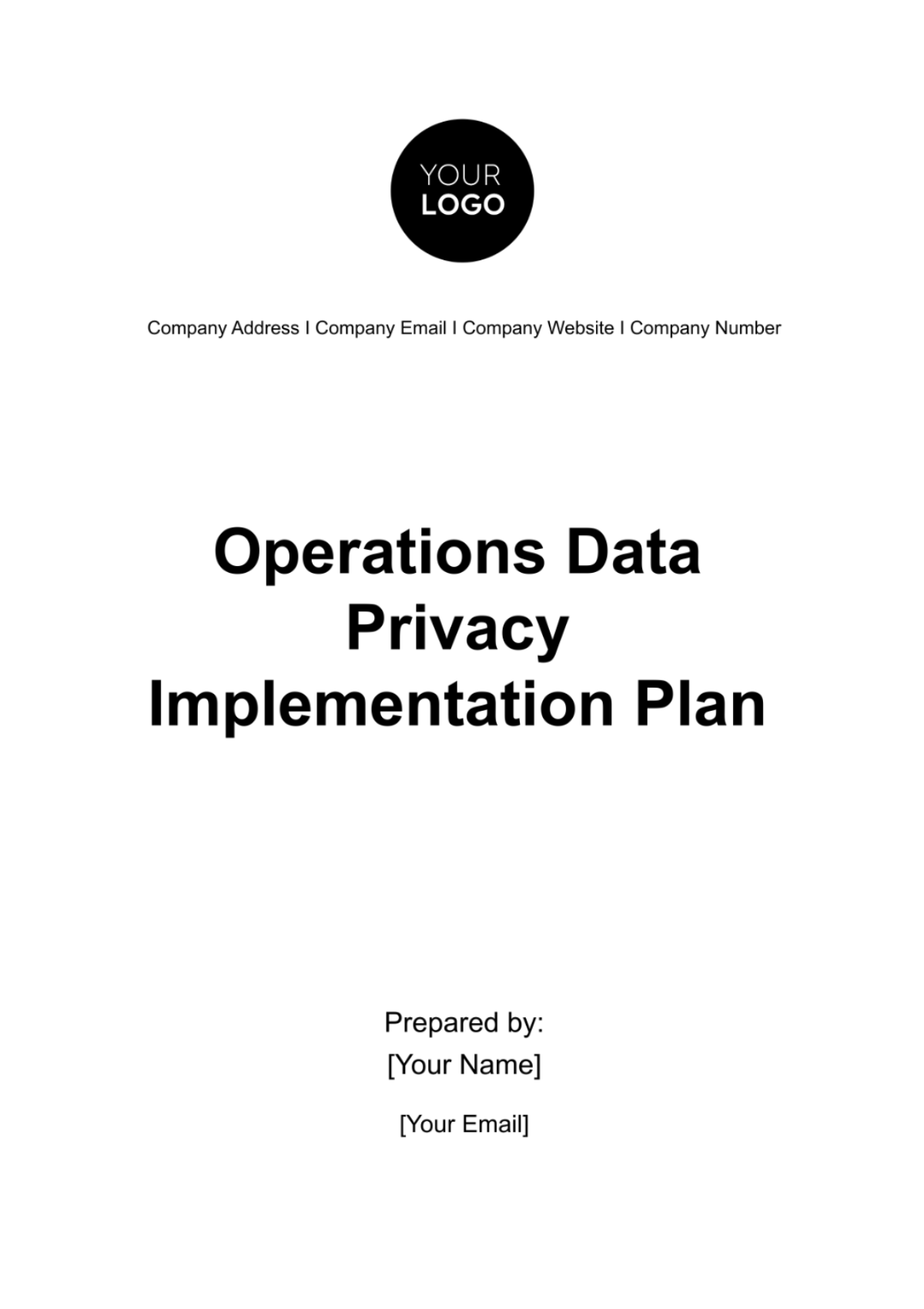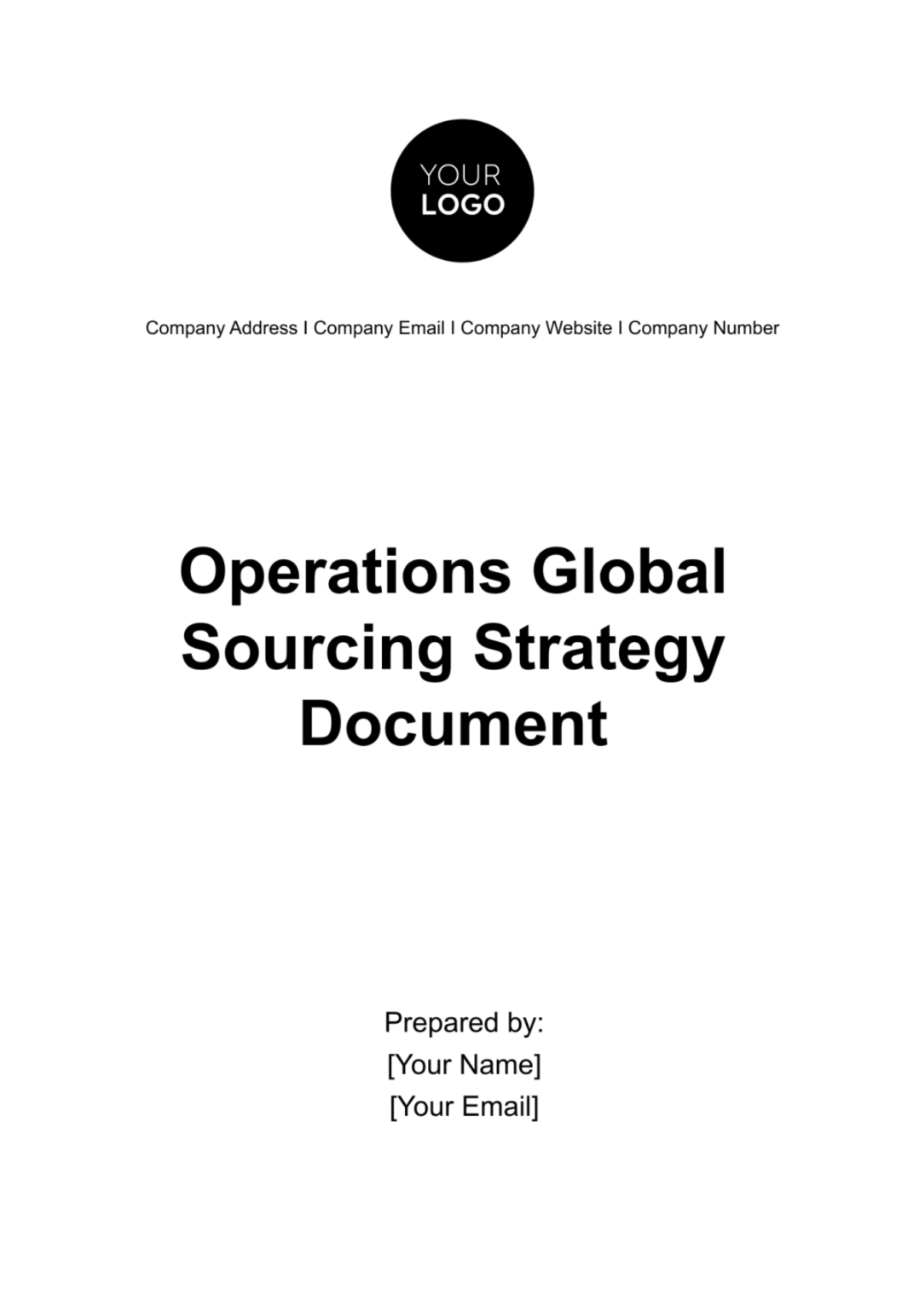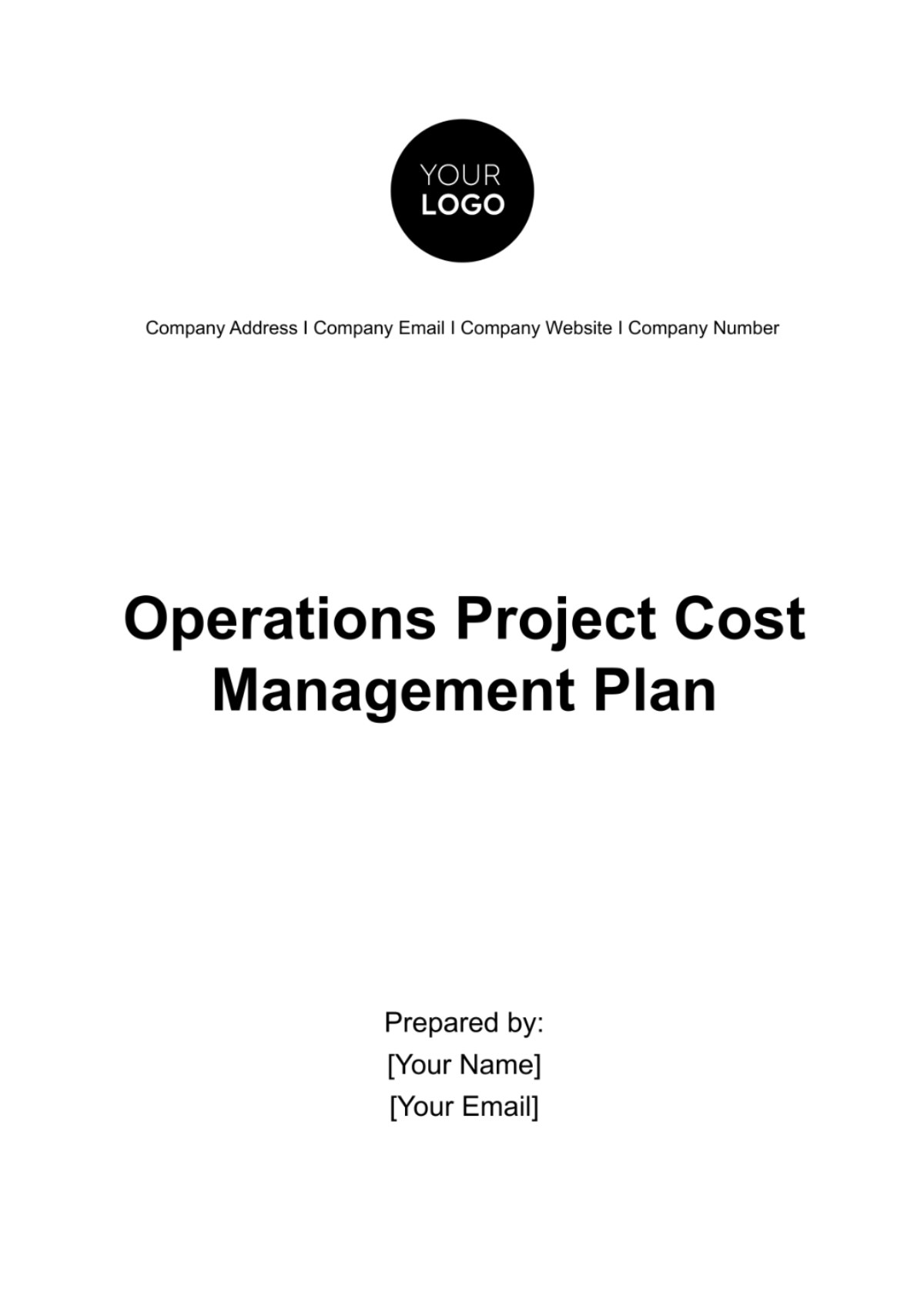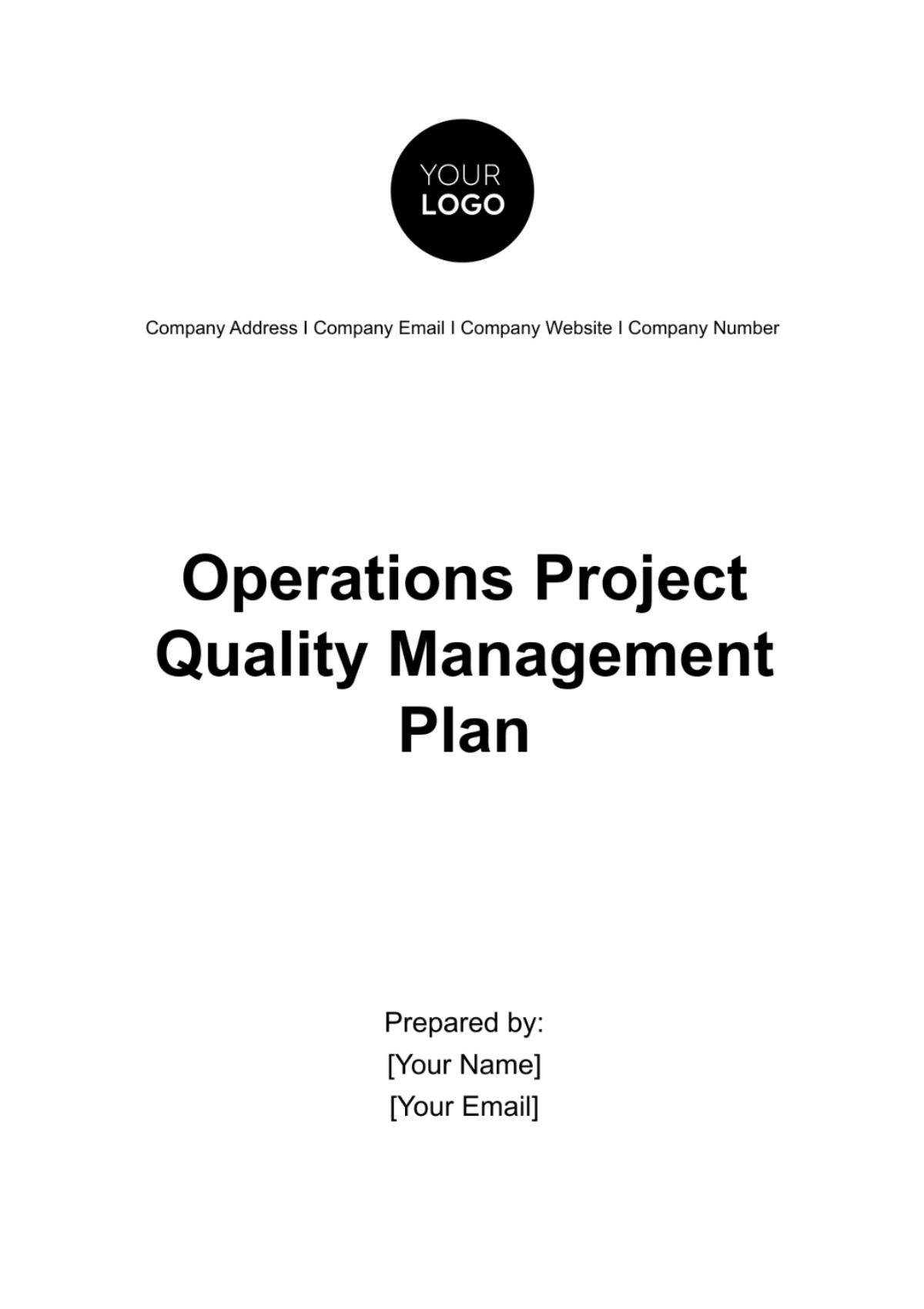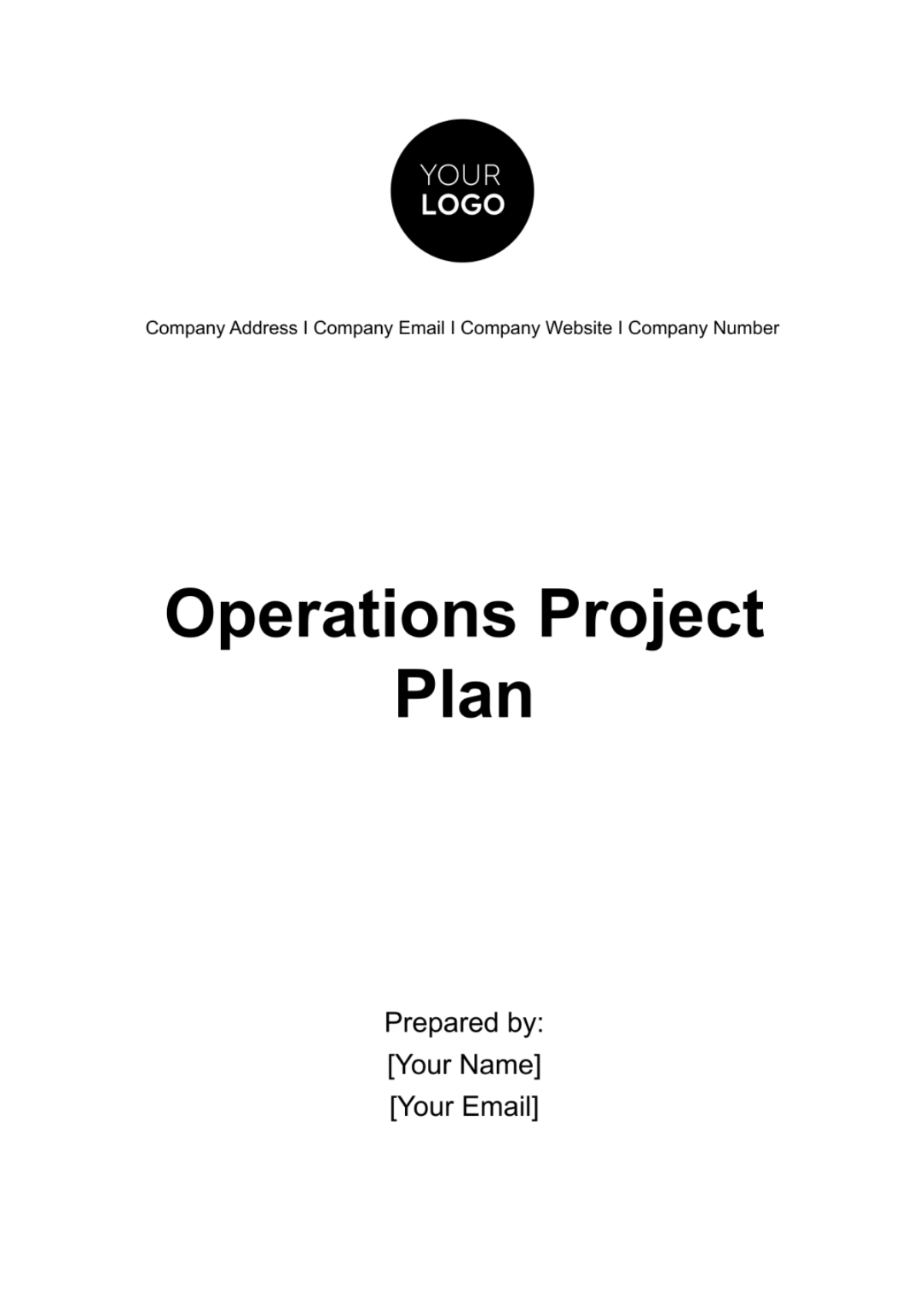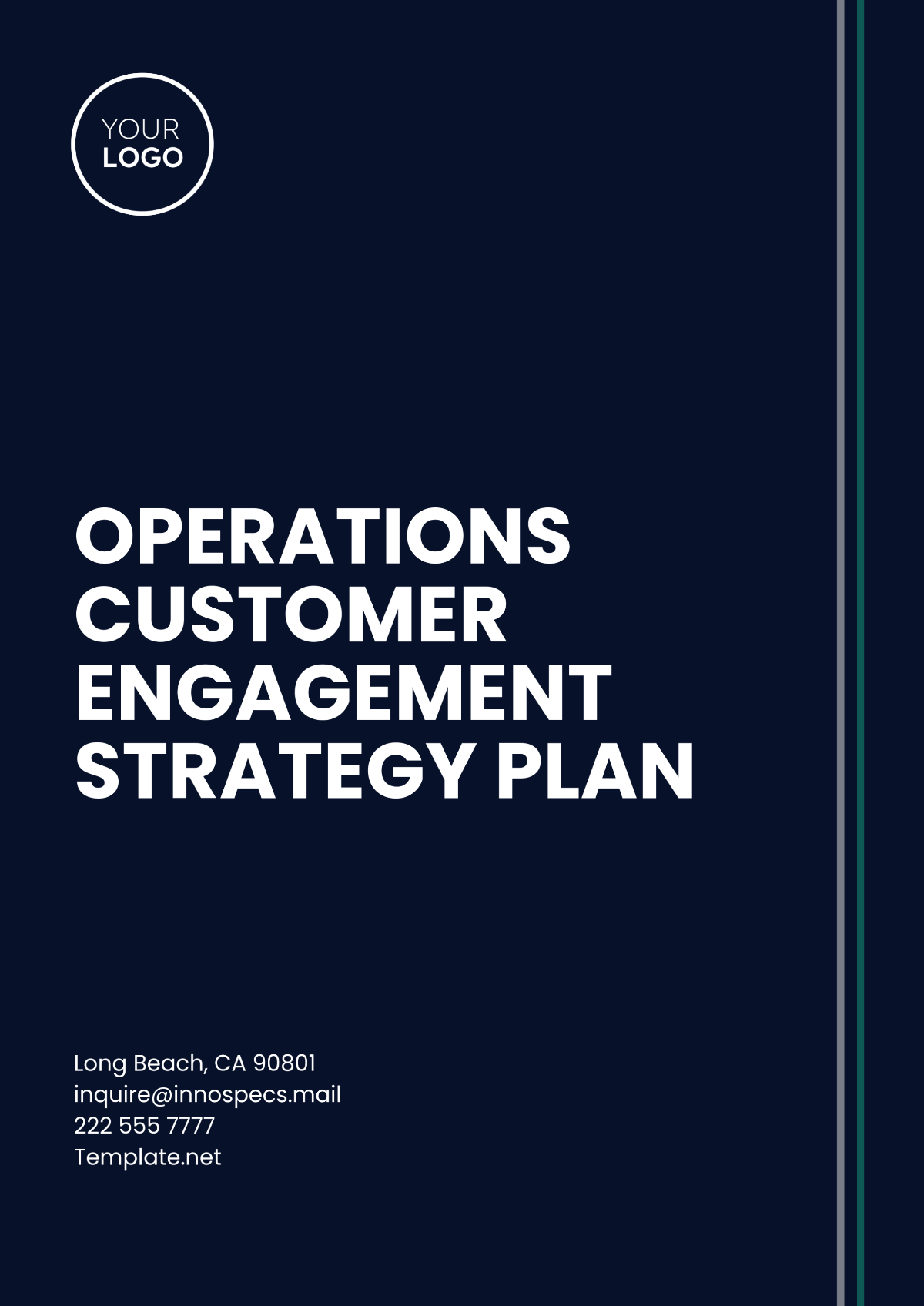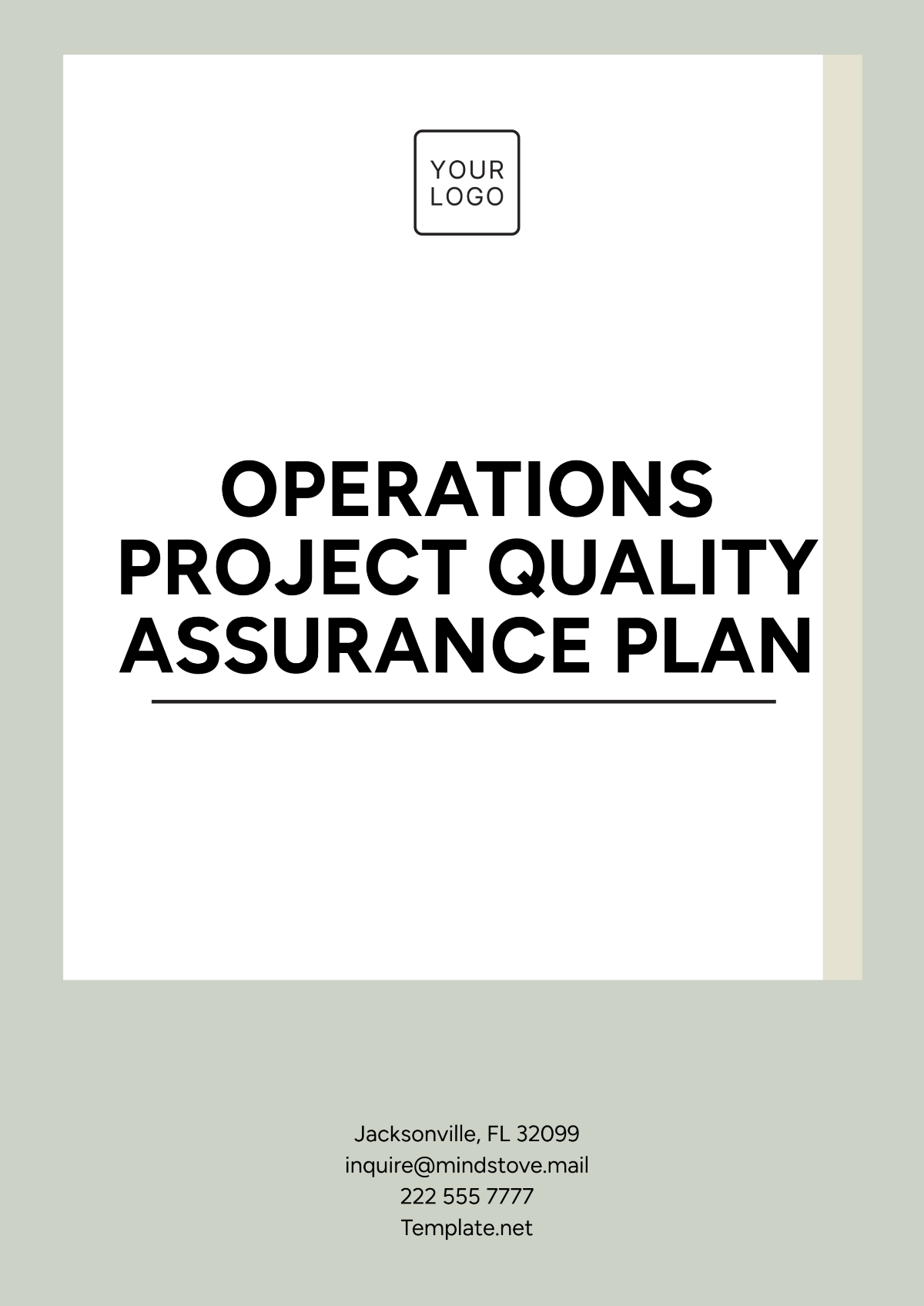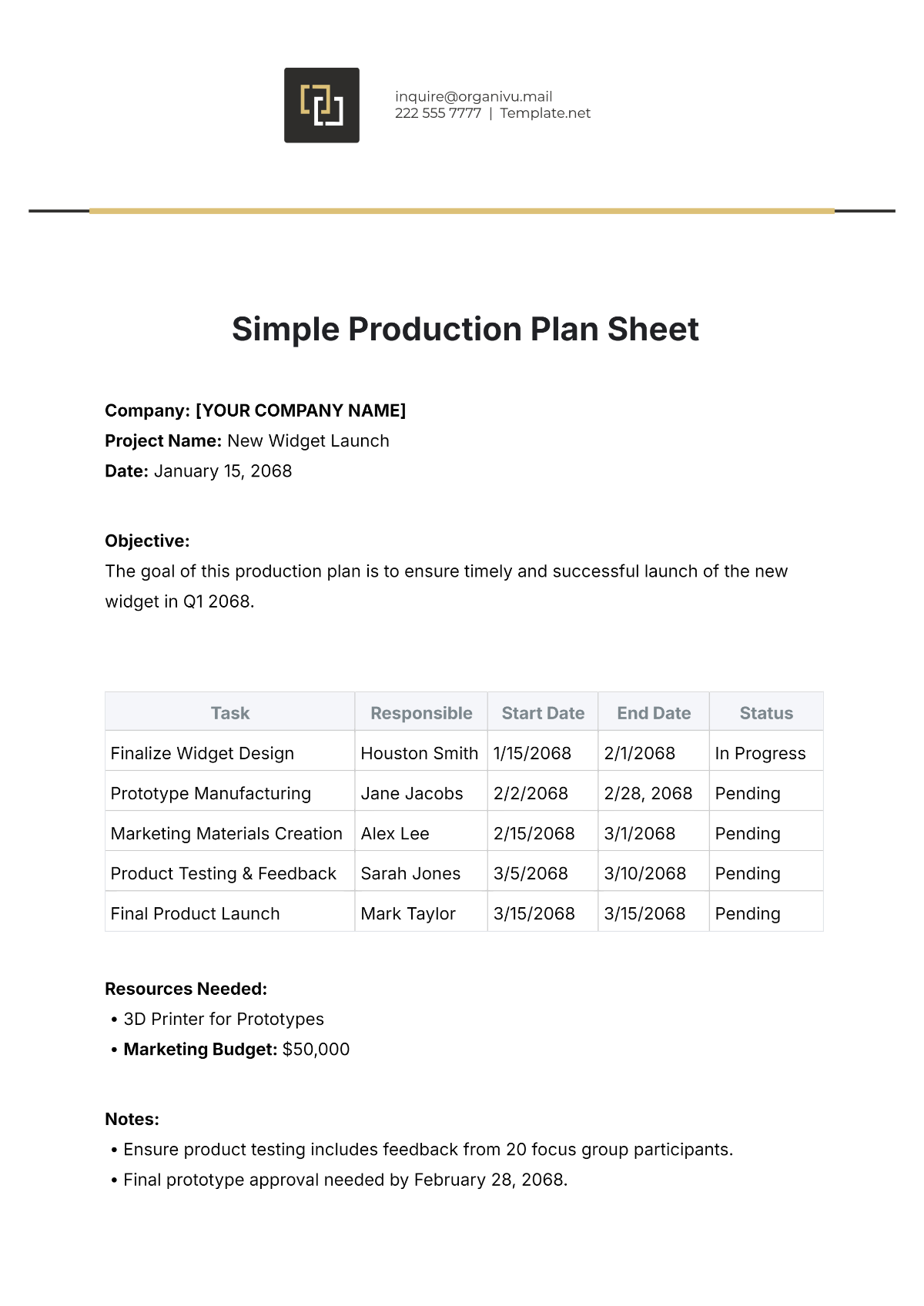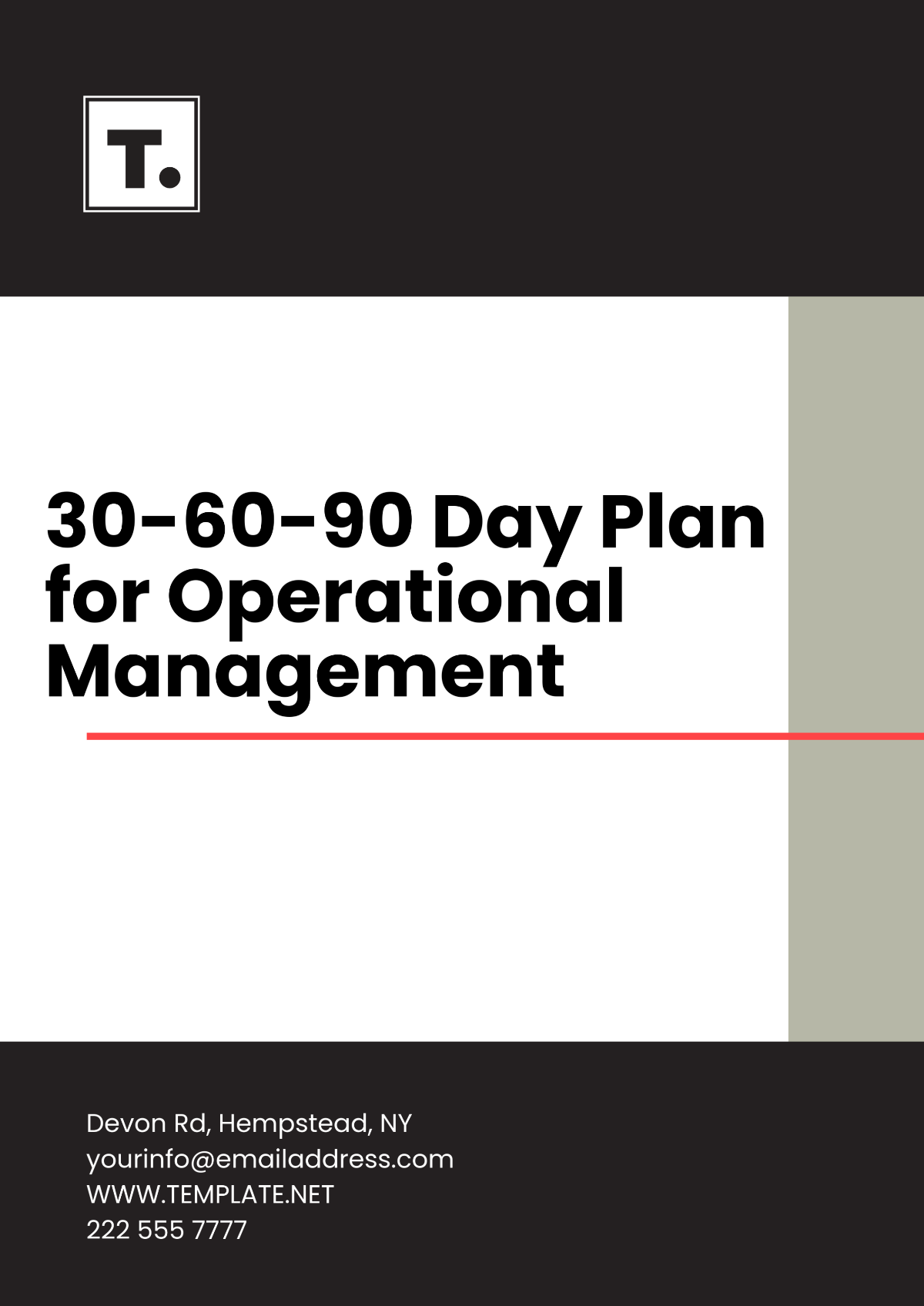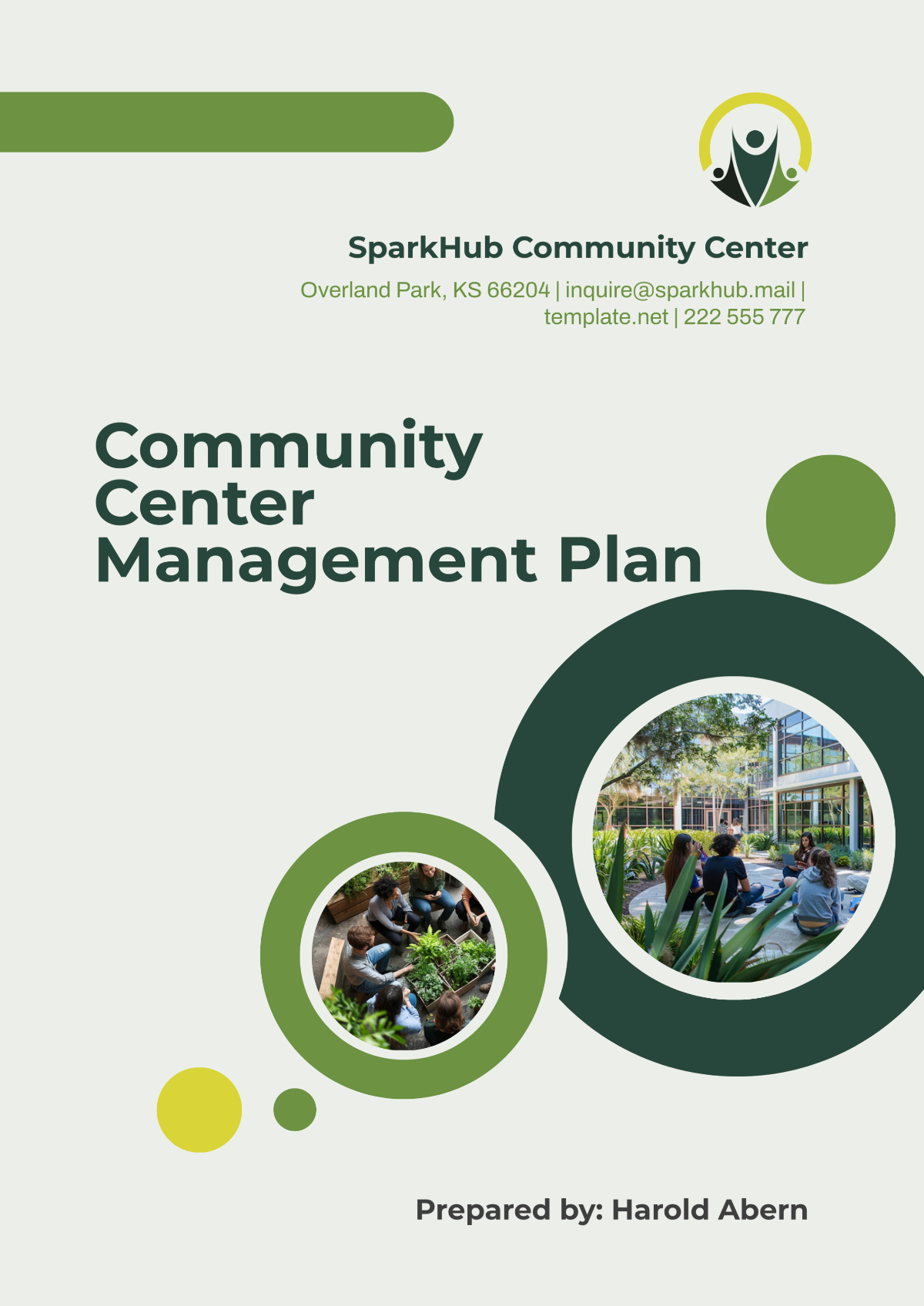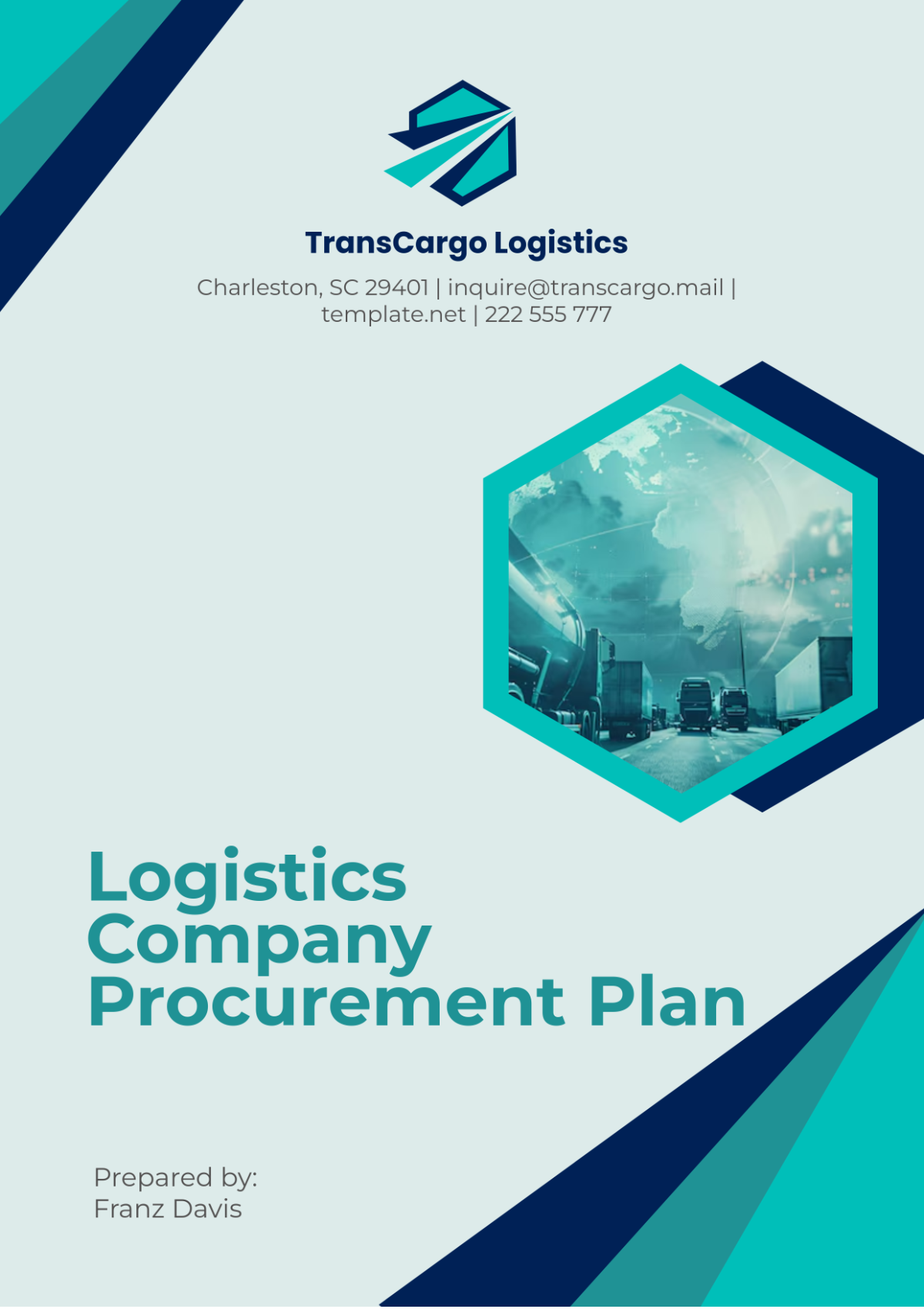Operations Resource Allocation Plan
I. Introduction
A. Purpose of the Plan
The Operations Resource Allocation Plan for [Your Company Name] aims to ensure the efficient and effective use of resources to support the company’s strategic objectives from the year 2050 onwards. This plan provides a framework for allocating financial, human, technological, and physical resources across various operational functions. By implementing this plan, [Your Company Name] will optimize resource utilization, reduce wastage, and enhance overall productivity, ensuring sustainable growth and profitability well into the future.
B. Scope of the Plan
This plan covers all operational activities within [Your Company Name] from the year 2050 onwards, including but not limited to manufacturing, supply chain management, customer service, information technology, and human resources. It outlines the processes for resource allocation, monitoring, and adjustment to adapt to changing business environments. The plan also includes guidelines for resource reallocation during unforeseen circumstances such as economic downturns, technological disruptions, or global crises.
C. Objectives
Optimize Resource Utilization: Ensure that resources are used efficiently to maximize output and minimize costs across all operational functions.
Align Resources with Strategic Goals: Allocate resources in a manner that supports the achievement of [Your Company Name]’s long-term strategic objectives.
Enhance Flexibility: Develop a resource allocation system that can quickly adapt to changes in market conditions, technological advancements, and other external factors.
Ensure Sustainability: Promote sustainable resource use, reducing environmental impact while maintaining operational efficiency.
Monitor and Evaluate: Implement continuous monitoring and evaluation mechanisms to assess the effectiveness of resource allocation and make necessary adjustments.
II. Resource Allocation Strategy
A. Financial Resources
1. Budget Allocation
Budget allocation is critical in ensuring that financial resources are distributed in line with the strategic priorities of [Your Company Name]. From 2050 onwards, the budget will be allocated based on the following criteria:
Strategic Importance: Priority will be given to projects and departments that are aligned with [Your Company Name]’s strategic goals, such as expanding into new markets, developing innovative products, or enhancing customer service.
Return on Investment (ROI): Financial resources will be directed toward initiatives that promise the highest return on investment, ensuring that every dollar spent contributes to the company’s profitability.
Risk Assessment: Resources will be allocated based on a thorough risk assessment, with contingency funds set aside for high-risk projects.
Table 1: Sample Budget Allocation for the Year 2050
Department | Budget (in Millions USD) | Percentage of Total Budget (%) |
|---|---|---|
Manufacturing | $500 | 25% |
Research & Development | $300 | 15% |
Supply Chain Management | $200 | 10% |
Information Technology | $400 | 20% |
Human Resources | $150 | 7.5% |
Marketing and Sales | $300 | 15% |
Contingency Fund | $150 | 7.5% |
Total | $2,000 | 100% |
2. Financial Forecasting
To maintain financial stability and support growth, financial forecasting will play a significant role in resource allocation. Forecasting will involve predicting future revenues, costs, and financial needs based on historical data, market trends, and economic indicators. [Your Company Name] will adopt advanced analytical tools and artificial intelligence to enhance the accuracy of financial forecasting.
B. Human Resources
1. Workforce Planning
Workforce planning involves identifying the current and future human resource needs of [Your Company Name] to ensure that the company has the right number of employees with the necessary skills to meet operational demands. The workforce planning process will include:
Skill Gap Analysis: Regularly analyzing the skill sets of the current workforce to identify gaps that need to be addressed through training or recruitment.
Succession Planning: Developing succession plans for key roles to ensure that the company can maintain operational continuity in the event of employee turnover.
Recruitment and Retention: Allocating resources to attract top talent and retain valuable employees through competitive compensation packages, professional development opportunities, and a positive work environment.
2. Training and Development
Investing in employee training and development is essential for maintaining a skilled and adaptable workforce. [Your Company Name] will allocate resources for ongoing training programs, leadership development, and upskilling initiatives. The company will also leverage digital learning platforms and virtual reality simulations to enhance training efficiency and effectiveness.
Table 2: Sample Training Budget Allocation for 2050
Training Program | Budget (in Millions USD) | Percentage of HR Budget (%) |
|---|---|---|
Leadership Development | $50 | 33.3% |
Technical Skills Training | $60 | 40% |
Digital Learning Platforms | $30 | 20% |
Employee Wellness Programs | $10 | 6.7% |
Total | $150 | 100% |
C. Technological Resources
1. IT Infrastructure
Investing in robust IT infrastructure is crucial for supporting the operations of [Your Company Name] as it expands and evolves in the 2050s and beyond. The allocation of resources to IT infrastructure will focus on:
Cloud Computing: Transitioning to cloud-based systems to enhance flexibility, scalability, and cost-efficiency in managing data and applications.
Cybersecurity: Allocating significant resources to cybersecurity measures to protect the company’s data, intellectual property, and customer information from cyber threats.
Artificial Intelligence and Automation: Investing in AI and automation technologies to streamline operations, improve decision-making, and reduce manual labor.
2. Research and Development (R&D)
R&D is a critical area where resource allocation can drive innovation and maintain [Your Company Name]’s competitive edge. The R&D strategy will focus on:
Product Innovation: Allocating resources to the development of new products and services that meet emerging market demands and consumer preferences.
Process Improvement: Investing in research to identify and implement process improvements that enhance efficiency and reduce costs.
Sustainability Initiatives: Funding research into sustainable technologies and practices that reduce environmental impact and support corporate social responsibility goals.
D. Physical Resources
1. Facilities Management
Efficient management of physical resources, including facilities, is essential for maintaining smooth operations at [Your Company Name]. The allocation of resources for facilities management will include:
Maintenance and Upkeep: Ensuring that all company facilities are well-maintained, safe, and conducive to productivity.
Energy Efficiency: Investing in energy-efficient technologies and practices to reduce operational costs and environmental impact.
Space Optimization: Allocating resources to optimize the use of space within facilities, such as flexible workspaces and smart building technologies.
2. Equipment and Machinery
The allocation of resources for equipment and machinery is crucial for supporting the operational needs of [Your Company Name]. This includes:
Capital Expenditure: Budgeting for the purchase or lease of new machinery and equipment that supports operational efficiency and productivity.
Maintenance and Upgrades: Allocating resources for the regular maintenance and upgrading of existing machinery to extend its lifespan and improve performance.
Innovation and Automation: Investing in innovative machinery and automation technologies to enhance operational capabilities and reduce manual labor.
III. Monitoring and Evaluation
A. Key Performance Indicators (KPIs)
To ensure the effectiveness of the resource allocation plan, [Your Company Name] will establish Key Performance Indicators (KPIs) to monitor progress and measure success. These KPIs will include:
Resource Utilization Rate: Measuring the percentage of allocated resources that are actively being used in operations, with a target of 90% or higher.
Return on Investment (ROI): Tracking the ROI for major projects and initiatives to ensure that financial resources are generating the expected returns.
Employee Productivity: Monitoring employee productivity levels to assess the impact of workforce planning and training programs.
IT System Uptime: Measuring the uptime of IT systems to ensure that technological resources are reliable and available when needed.
Sustainability Metrics: Tracking energy consumption, waste reduction, and other sustainability metrics to assess the effectiveness of environmental initiatives.
B. Resource Reallocation Procedures
Resource needs may change over time due to shifts in market conditions, technological advancements, or internal priorities. To address these changes, [Your Company Name] will implement resource reallocation procedures that include:
Regular Reviews: Conducting regular reviews of resource allocation to identify areas where resources can be reallocated to better support strategic objectives.
Contingency Planning: Maintaining a contingency plan that outlines the steps to be taken in the event of unexpected resource needs, such as economic downturns or natural disasters.
Stakeholder Consultation: Engaging with key stakeholders, including department heads and financial officers, to ensure that resource reallocation decisions are well-informed and aligned with overall business goals.
C. Continuous Improvement
The resource allocation plan is a living document that will evolve over time to meet the changing needs of [Your Company Name]. Continuous improvement efforts will focus on:
Feedback Mechanisms: Establishing feedback mechanisms that allow employees at all levels to provide input on resource allocation and identify areas for improvement.
Benchmarking: Regularly benchmarking [Your Company Name]’s resource allocation practices against industry standards and best practices to identify opportunities for enhancement.
Innovation in Resource Management: Exploring new tools, technologies, and methodologies that can improve resource allocation processes and outcomes.
IV. Risk Management
A. Identifying Resource Allocation Risks
Resource allocation is subject to various risks that can impact the success of [Your Company Name]’s operations. These risks include:
Economic Volatility: Changes in the global economy, such as recessions or inflation, can affect the availability and cost of financial resources.
Technological Disruptions: Rapid advancements in technology can render existing resources obsolete, requiring significant investment in new systems and training.
Supply Chain Disruptions: Disruptions in the supply chain, such as shortages of raw materials or transportation issues, can impact the availability of physical resources.
B. Mitigation Strategies
To mitigate these risks, [Your Company Name] will implement the following strategies:
Diversification: Diversifying resource sources, such as multiple suppliers or financial instruments, to reduce reliance on any single source.
Insurance: Purchasing insurance policies to protect against losses related to resource allocation risks, such as business interruption insurance.
Resilience Planning: Developing resilience plans that outline steps to be taken in the event of a major disruption, ensuring that the company can quickly recover and continue operations.
C. Crisis Management
In the event of a crisis, [Your Company Name] will activate its crisis management plan, which includes:
Crisis Response Team: Establishing a crisis response team with representatives from all key departments to coordinate resource allocation during the crisis.
Communication Plan: Implementing a communication plan to ensure that all employees are informed of the situation and understand their roles in the crisis response.
Post-Crisis Evaluation: Conducting a post-crisis evaluation to assess the effectiveness of the resource allocation during the crisis and identify lessons learned for future improvements.
V. Conclusion
A. Summary of Key Points
The Operations Resource Allocation Plan for [Your Company Name] is a comprehensive strategy designed to optimize the use of financial, human, technological, and physical resources in support of the company’s long-term goals. This plan outlines the processes for allocating resources, monitoring progress, and making adjustments to adapt to changing conditions. By implementing this plan, [Your Company Name] will enhance operational efficiency, reduce costs, and ensure sustainable growth from 2050 onwards.
B. Future Outlook
Looking ahead, [Your Company Name] is committed to continuously improving its resource allocation practices to stay ahead of industry trends and maintain a competitive edge. The company will invest in new technologies, training programs, and sustainability initiatives to support its growth and success in the decades to come. By prioritizing flexibility, innovation, and sustainability, [Your Company Name] will be well-positioned to navigate the challenges and opportunities of the future.
C. Recommendations
To ensure the ongoing success of the resource allocation plan, it is recommended that [Your Company Name]:
Conduct Annual Reviews: Perform annual reviews of the resource allocation plan to ensure that it remains aligned with the company’s strategic objectives and market conditions.
Invest in Technology: Continue to invest in advanced technologies, such as artificial intelligence and automation, to enhance resource allocation processes and outcomes.
Focus on Sustainability: Prioritize sustainability in all resource allocation decisions, ensuring that the company’s operations have a minimal environmental impact.
Engage Employees: Actively engage employees in the resource allocation process, soliciting their input and feedback to improve efficiency and effectiveness.
Prepare for the Future: Stay informed of emerging trends and potential disruptions to proactively adjust the resource allocation plan as needed, ensuring the company’s long-term success.
